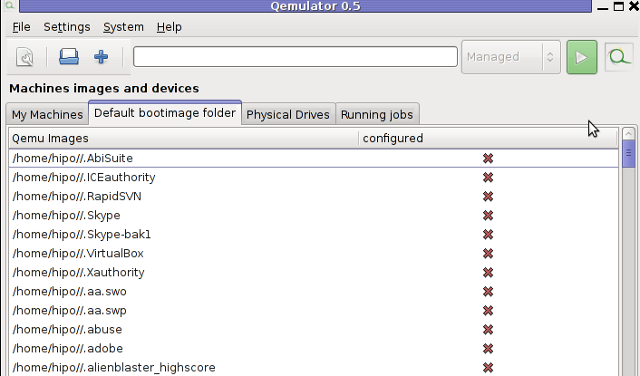December 2011 Archives
Sat Dec 31 11:54:12 EET 2011
Upgrading Skype 2.0 to Skype 2.2 beta on Debian GNU / Linux - Skype Mic hell
Though, I'm GNU / Linux user
for many years now. I have to say, everything is not so perfect as
many people present it.
Configuring even simple things related to multimedia on Linux is often a complete nightmare.
An example, today I've decided to upgrade my 32 bit Skype version 2.0 beta for Linux to 64 bit Skype 2.2 beta .
The reason I was motivated to upgrade skype was basicly 2.
a) My Skype run through 32 bit binary emulation with /usr/bin/linux32
b) I had issues with my skype if someone give me a Skype Call, while I have a flash video or some other stream in Browser (let's say Youtube).
Actually being unable to receive a skype call or initiate one while I have some kind of music running in the background or just some kind of Youtube video paused was really annoying. Hence until now, everytime I wanted to speak over skype I had to close all Browser windows or tabs that are using my sound card and then restart my Skype program ....
Just imagine how ridiculous is that especially for a modern Multimedia supporting OS as Linux is. Of course the problems, I've experienced wasn't directly a problem of Linux. The problems are caused by the fact I have to use the not well working proprietary software version of Skype on my Debian GNU / Linux.
I would love to actually boycott Skype as RMS recommends, but unfortunately until now I can't, since many of my friends as well as employers use Skype to connect with me on daily basis.
So in a way I had to migrate to newer version of skype in order to make my Linux experience a bit more desktop like ...
Back to the my skype 2.0 to 2.2. beta upgrade story, the overall Skype upgrade procedure was easy and went smootlhy, setting correct capturing later on however was a crazy task ....
Here is the step by step to follow to make my upgraded skype and internal notebook mic play nice together:
1. Download 64 bit Skype for Debian from skype.com
For the sake of preservation in case it disappears in future, I've made a mirror of skype for debian you can download here
My upgrade example below uses directly the 64 bit Skype 2.2beta binary mirror:
Here are the cmds once can issue if he has to upgrade to 2.2beta straight using my mirrored skype:
2. Remove the old version of skype
In my case I have made my previous skype installation using .tar.bz2 archive and not a debian package, however for some testing I also had a version of skype 2.0beta installed as a deb so for the sake of clarity I removed the existing skype deb install:
debian:~# dpkg -r skype
...
3. Install the skype-debian_2.2.0.35-1_amd64.deb downloaded deb
After installing skype, I installed pavucontrol - A volume control for the PulseAudio sound server
4. Install pavucontrol
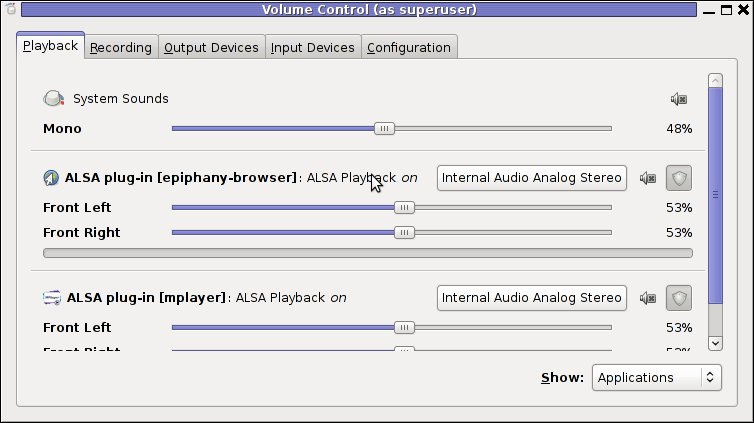
Pavucontrol has plenty of sound configurations and enables the user to change many additional settings which cannot be tuned in alsamixer
pavucontrol was necessery to play with until I managed to make my microphone able to record.
5. Build and install latest Debian (Testing) distribution alsa driver
In my case removing the sound drivers and loading them once again did not worked, so I had to reboot my system before the new compiled alsa sound modules gets loaded ...
The last line echo 'options snd-hda-intel model=auto' ... was necessery for my Thinkpard r61 Intel audio to work out. For some clarity my exact sb model is:
For other notebooks with different sound drivers echo 'options snd-hda-intel model=auto' ... should be omitted.
6. Tune microphone and sound settings in alsamixer

Right after launching alsamixer I had to press F6: Select Sound Card and choose my sound card (0 HDA Intel).
Following my choose I unmuted all the microphones and enabled Microphone Boost as well as did some adjustments to the MIC volume level.
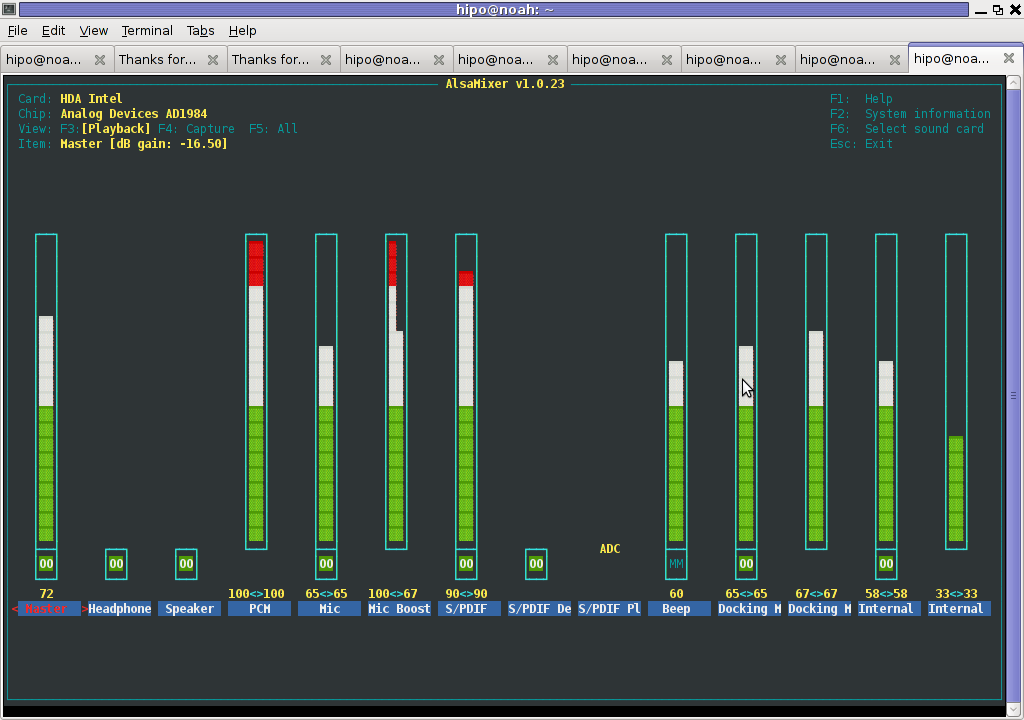
Setting proper MIC Volume levels is absolutely necessery, otherwise there is a constant noise getting out of the speakers ...
7. Use aumix to set some other sound settings
For some unclear reasons, besides alsamixer , I often had to fix stuff in aumix . Honestly I don't understand where exactly aumix fits in the picture with Alsa and my loaded alsa sound blaster module?? If someone can explain I'll be thankful.
Launch aumix to further adjust some sound settings ...
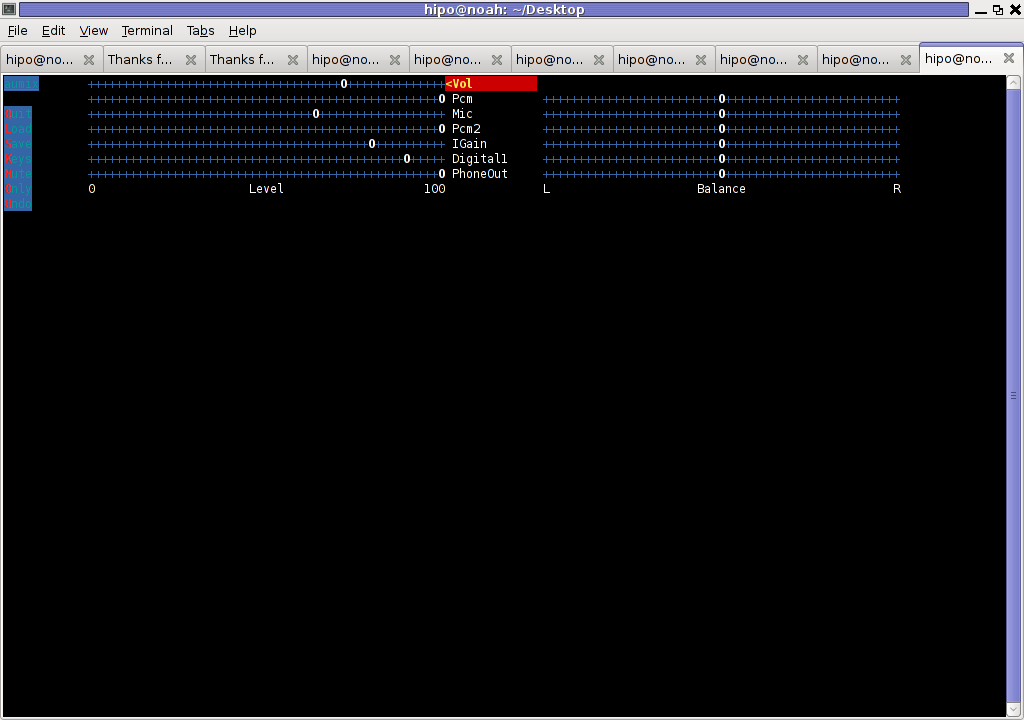
In above screenshot you see, my current aumix settings which works okay with mic and audio output.
8. Test Microphone the mic is capturing sounds correctly
For the sake of test if my sound settings set in pavucontrol enables the internal mic to capture sound I used two programs:
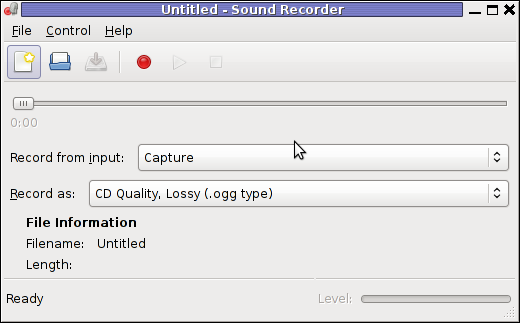
gnome-sound-recorder
gnome-sound-recorder is probably used by most GNOME users, though I'm sure Linux noviced did not play with it yet.
arecord is just a simple console based app to capture sound from the microphone. To test if the microphone works I captured a chunk of sounds with cmd:
Later on I played the file with aplay (part of alsa-utils package in Debian), to check if I'll hear if mic succesfully captured my voice, e.g.:
Finally I launched the new installed version of skype and tested Skype Calls (Mic capturing), with Skype Echo / Sound Test Service
I'll be glad to hear if this small article, helped anybody to fix any skype Linux related issues ?. I would be happy to hear also from people who had similar issues with a different fixes for skype on Linux.
Its also interesting to hear from Ubuntu and other distributions users if following this tutorial had somehow helped in resolving issues with Skype mic.
Configuring even simple things related to multimedia on Linux is often a complete nightmare.
An example, today I've decided to upgrade my 32 bit Skype version 2.0 beta for Linux to 64 bit Skype 2.2 beta .
The reason I was motivated to upgrade skype was basicly 2.
a) My Skype run through 32 bit binary emulation with /usr/bin/linux32
b) I had issues with my skype if someone give me a Skype Call, while I have a flash video or some other stream in Browser (let's say Youtube).
Actually being unable to receive a skype call or initiate one while I have some kind of music running in the background or just some kind of Youtube video paused was really annoying. Hence until now, everytime I wanted to speak over skype I had to close all Browser windows or tabs that are using my sound card and then restart my Skype program ....
Just imagine how ridiculous is that especially for a modern Multimedia supporting OS as Linux is. Of course the problems, I've experienced wasn't directly a problem of Linux. The problems are caused by the fact I have to use the not well working proprietary software version of Skype on my Debian GNU / Linux.
I would love to actually boycott Skype as RMS recommends, but unfortunately until now I can't, since many of my friends as well as employers use Skype to connect with me on daily basis.
So in a way I had to migrate to newer version of skype in order to make my Linux experience a bit more desktop like ...
Back to the my skype 2.0 to 2.2. beta upgrade story, the overall Skype upgrade procedure was easy and went smootlhy, setting correct capturing later on however was a crazy task ....
Here is the step by step to follow to make my upgraded skype and internal notebook mic play nice together:
1. Download 64 bit Skype for Debian from skype.com
For the sake of preservation in case it disappears in future, I've made a mirror of skype for debian you can download here
My upgrade example below uses directly the 64 bit Skype 2.2beta binary mirror:
Here are the cmds once can issue if he has to upgrade to 2.2beta straight using my mirrored skype:
debian:~# wget
http://pc-freak.net/files/skype-debian_2.2.0.35-1_amd64.deb
...
2. Remove the old version of skype
In my case I have made my previous skype installation using .tar.bz2 archive and not a debian package, however for some testing I also had a version of skype 2.0beta installed as a deb so for the sake of clarity I removed the existing skype deb install:
debian:~# dpkg -r skype
...
3. Install the skype-debian_2.2.0.35-1_amd64.deb downloaded deb
debian:~# dpkg -i skype-debian_2.2.0.35-1_amd64.deb
...
After installing skype, I installed pavucontrol - A volume control for the PulseAudio sound server
4. Install pavucontrol
debian:~# apt-get install pavucontrol

Pavucontrol has plenty of sound configurations and enables the user to change many additional settings which cannot be tuned in alsamixer
pavucontrol was necessery to play with until I managed to make my microphone able to record.
5. Build and install latest Debian (Testing) distribution alsa driver
debian:~# aptitude install module-assistant
debian:~# m-a prepare
debian:~# aptitude -t testing install alsa-source
debian:~# m-a build alsa
debian:~# m-a install alsa
debian:~# rmmod snd_hda_intel snd_pcm snd_timer snd soundcore
snd_page_alloc
debian:~# modprobe snd_hda_intel
debian:~# echo 'options snd-hda-intel model=auto' >>
/etc/modprobe.d/alsa-base.conf
In my case removing the sound drivers and loading them once again did not worked, so I had to reboot my system before the new compiled alsa sound modules gets loaded ...
The last line echo 'options snd-hda-intel model=auto' ... was necessery for my Thinkpard r61 Intel audio to work out. For some clarity my exact sb model is:
debian:~$ lspci |grep -i audio
00:1b.0 Audio device: Intel Corporation 82801H (ICH8 Family) HD
Audio Controller (rev 03)
For other notebooks with different sound drivers echo 'options snd-hda-intel model=auto' ... should be omitted.
6. Tune microphone and sound settings in alsamixer
debian:~$ alsamixer

Right after launching alsamixer I had to press F6: Select Sound Card and choose my sound card (0 HDA Intel).
Following my choose I unmuted all the microphones and enabled Microphone Boost as well as did some adjustments to the MIC volume level.

Setting proper MIC Volume levels is absolutely necessery, otherwise there is a constant noise getting out of the speakers ...
7. Use aumix to set some other sound settings
For some unclear reasons, besides alsamixer , I often had to fix stuff in aumix . Honestly I don't understand where exactly aumix fits in the picture with Alsa and my loaded alsa sound blaster module?? If someone can explain I'll be thankful.
Launch aumix to further adjust some sound settings ...
debian:~$ aumix

In above screenshot you see, my current aumix settings which works okay with mic and audio output.
8. Test Microphone the mic is capturing sounds correctly
For the sake of test if my sound settings set in pavucontrol enables the internal mic to capture sound I used two programs:
1. gnome-sound-recorder
2. arecord

gnome-sound-recorder
gnome-sound-recorder is probably used by most GNOME users, though I'm sure Linux noviced did not play with it yet.
arecord is just a simple console based app to capture sound from the microphone. To test if the microphone works I captured a chunk of sounds with cmd:
debian:~$ arecord
Recording WAVE 'cow.wav' : Unsigned 8 bit, Rate 8000 Hz,
Mono
Later on I played the file with aplay (part of alsa-utils package in Debian), to check if I'll hear if mic succesfully captured my voice, e.g.:
debian:~$ play cow.wav
cow.wav:
File Size: 22.0k Bit Rate: 64.1k
Encoding: Unsigned PCM
Channels: 1 @ 8-bit
Samplerate: 8000Hz
Replaygain: off
Duration: 00:00:02.75
In:100% 00:00:02.75 [00:00:00.00] Out:22.0k [-=====|=====-]
Clip:0
Done.
Finally I launched the new installed version of skype and tested Skype Calls (Mic capturing), with Skype Echo / Sound Test Service
I'll be glad to hear if this small article, helped anybody to fix any skype Linux related issues ?. I would be happy to hear also from people who had similar issues with a different fixes for skype on Linux.
Its also interesting to hear from Ubuntu and other distributions users if following this tutorial had somehow helped in resolving issues with Skype mic.
Thu Dec 29 21:46:19 EET 2011
How to prevent SSH and FTP bruteforce attacks with iptables on Linux
Earlier I've blogged about
how to prevent brute force attacks with fail2ban, denohosts and
blockhosts , however there is easier way to secure against
basic brute force attacks by not installing or configuring any
external programs.
The way I'm talking about uses simple iptables rules to filter out brute force attacks.
Here is a small script to stop ssh and FTP invaders which try to initiate more than 3 consequential connections in 5 minutes time to port 22 or port 23:
The only thin If the rules are matched iptables filter rules will be added to the iptables CHAIN SSH_WHITELIST
In case if you want to add some more truested IPs add some more iptables rules, like:
Each filtered IP that matches the rules will be filtered for 5 minutes, if 5 minutes is enough, the 300 value has to be increased.
The way I'm talking about uses simple iptables rules to filter out brute force attacks.
Here is a small script to stop ssh and FTP invaders which try to initiate more than 3 consequential connections in 5 minutes time to port 22 or port 23:
SERVER_MAIN_IP='AAA.BBB.CCC.DDD'; /sbin/iptables -N
SSH_WHITELIST
/sbin/iptables -A INPUT -p tcp --dport 22 --syn -m recent --name
sshbr --set
/sbin/iptables -A INPUT -p tcp --dport 22 --syn -j
SSH_WHITELIST
/sbin/iptables -A INPUT -p tcp --dport 22 --syn -m recent --name
sshbr \
--update --rttl --hitcount 3 --seconds 300 -j REJECT --reject-with
tcp-reset
/sbin/iptables -A SSH_WHITELIST -s $SERVER_MAIN_IP -p tcp --dport
22 --syn -m recent --rttl --remove
The only thin If the rules are matched iptables filter rules will be added to the iptables CHAIN SSH_WHITELIST
In case if you want to add some more truested IPs add some more iptables rules, like:
ALLOW_IP='BBB.CCC.DDD.EEE';
/sbin/iptables -A SSH_WHITELIST -s $ALLOW_IP -p tcp --dport 22
--syn -m recent --rttl --remove
Each filtered IP that matches the rules will be filtered for 5 minutes, if 5 minutes is enough, the 300 value has to be increased.
Wed Dec 28 19:42:14 EET 2011
How to install and configure Jabber Server (Ejabberd) on Debian Lenny GNU / Linux

I've recently installed a jabber server on one Debian Lenny server and hence decided to describe my installations steps hoping this would help ppl who would like to run their own jabber server on Debian . After some research of the jabber server softwares available, I decided to install Ejabberd
The reasons I choose Ejabberd is has rich documentation, good community around the project and the project in general looks like one of the best free software jabber servers available presently. Besides that ejabberd doesn't need Apache or MySQL and only depends on erlang programming language.
Here is the exact steps I followed to have installed and configured a running XMPP jabber server.
1. Install Ejabberd with apt
The installation of Ejabberd is standard, e.g.:
debian:~# apt-get --yes install ejabberd
Now as ejabberd is installed, some minor configuration is necessery before the server can be launched:
2. Edit /etc/ejabberd/ejabberd.cfg
Inside I changed the default settings for:
a) Uncomment%%override_acls.. Changed:
%% %% Remove the Access Control Lists before new ones are
added. %% %%override_acls.to
%%
%% Remove the Access Control Lists before new ones are added.
%%
override_acls.
b) Admin User from:
%% Admin user
{acl, admin, {user, "", "example.com"}}.
to
%% Admin user
{acl, admin, {user, "admin",
"jabber.myserver-host.com"}}.
c) default %% Hostname of example.com to my real hostname:
%% Hostname
{hosts, ["jabber.myserver-host.com"]}.
The rest of the configurations in /etc/ejabberd/ejabberd.cfg can stay like it is, though it is interesting to read it carefully before continuing as, there are some config timings which might prevent the XMPP server from user brute force attacks as well as few other goodies like for example (ICQ, MSN , Yahoo etc.) protocol transports.
3. Add iptables ACCEPT traffic (allow) rules for ports which are used by Ejabberd
The minimum ACCEPT rules to add are:
/sbin/iptables -A INPUT -p tcp -m tcp --dport 22 -j
ACCEPT
/sbin/iptables -A INPUT -p tcp -m tcp --dport 5222 -j ACCEPT
/sbin/iptables -A INPUT -p udp -m udp --dport 5222 -j ACCEPT
/sbin/iptables -A INPUT -p tcp -m tcp --dport 5223 -j ACCEPT
/sbin/iptables -A INPUT -p udp -m udp --dport 5223 -j ACCEPT
/sbin/iptables -A INPUT -p tcp -m tcp --dport 5269 -j ACCEPT
/sbin/iptables -A INPUT -p udp -m udp --dport 5269 -j ACCEPT
/sbin/iptables -A INPUT -p tcp -m tcp --dport 5280 -j ACCEPT
/sbin/iptables -A INPUT -p udp -m udp --dport 5280 -j ACCEPT
/sbin/iptables -A INPUT -p tcp -m tcp --dport 4369 -j ACCEPT
/sbin/iptables -A INPUT -p udp -m udp --dport 4369 -j ACCEPT
/sbin/iptables -A INPUT -p tcp -m tcp --dport 53873 -j
ACCEPT
Of course if there is some specific file which stores iptables rules or some custom firewall these rules has to be added / modified to fit appropriate place or chain.
4. Restart ejabberd via init.d script
debian:~# /etc/init.d/ejabberd restart
Restarting jabber server: ejabberd is not running. Starting
ejabberd.
5. Create ejabberd necessery new user accounts
debian:~# /usr/sbin/ejabberdctl register admin
jabber.myserver-host.com mypasswd1
debian:~# /usr/sbin/ejabberdctl register hipo
jabber.myserver-host.com mypasswd2
debian:~# /usr/sbin/ejabberdctl register newuser
jabber.myserver-host.com mypasswd3
debian:~# /usr/sbin/ejabberdctl register newuser1
jabber.myserver-host.com mypasswd4
...
etc.ejabberdctl ejabberd server client (frontend) has multiple other options and the manual is a good reading.
One helpful use of ejabberdctl is:
debian:~# /usr/sbin/ejabberdctl status
Node ejabberd@debian is started. Status: started
ejabberd is running
ejabberctl can be used also to delete some existent users, for example to delete the newuser1 just added above:
debian:~# /usr/sbin/ejabberdctl unregister newuser
jabber.myserver-host.com
6. Post install web configurations
ejabberd server offers a web interface listening on port 5280, to access the web interface right after it is installed I used URL: http://jabber.myserver-host.com:5280/admin/
To login to http://jabber.myserver-host.com:5280/admin/ you will need to use the admin username previously added in this case:
admin@jabber.myserver-host.com mypasswd1
Anyways in the web interface there is not much of configuration options available for change.
7. Set dns SRV records
I'm using Godaddy 's DNS for my domain so here is a screenshot on the SRV records that needs to be configured on Godaddy:

In the screenshto Target is the Fually qualified domain hostname for the jabber server.
Setting the SRV records for the domain using Godaddy's DNS could take from 24 to 48 hours to propagate the changes among all the global DNS records so be patient.
If instead you use own custom BIND DNS server the records that needs to be added to the respective domain zone file are:
_xmpp-client._tcp 900 IN SRV 5 0 5222
jabber.myserver-host.com.
_xmpp-server._tcp 900 IN SRV 5 0 5269
jabber.myserver-host.com.
_jabber._tcp 900 IN SRV 5 0 5269
jabber.myserver-host.com.
8. Testing if the SRV dns records for domain are correct
debian:~$ nslookup > set type=SRV
> jabber.myserver-host.com
...
If all is fine above nslookup request should return the requested domain SRV records.
9. Debugging issues with ejabberd
Ejabberd log files are located in /var/log/ejabberd , you will have to check the logs in case of any issues with the jabber XMPP server. Here is the three files which log messages from ejabberd:
debian:~$ ls -1 /var/log/ejabberd/
ejabberd.log
erl_crash.dump
sasl.log
I will not get into details on the logs as the best way to find out about them is to read them ;)
10. Testing ejabberd server with Pidgin
To test if my Jabber server works properly I used Pidgin universal chat client . However there are plenty of other multiplatform jabber clients out there e.g.: Psi , Spark , Gajim etc.
Here is a screenshot of my (Accounts -> Manage Accounts -> Add) XMPP protocol configuration
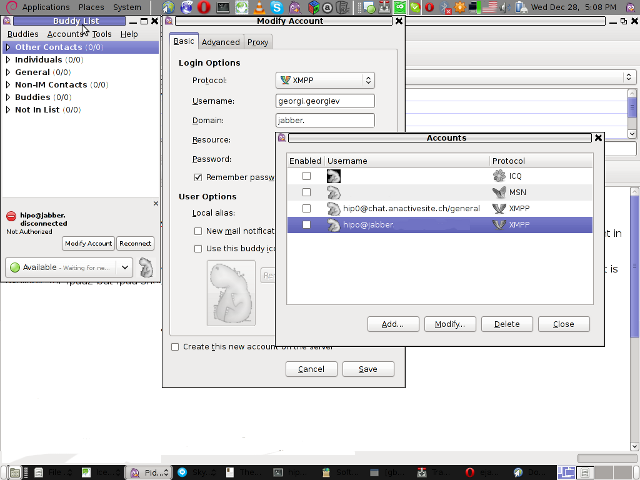
Tue Dec 27 18:17:27 EET 2011
Feast of Saint Stephen's martyrdom in Bulgarian Orthodox Church / Saint Stephen the first Christian Saint
It is 27th of December, the 3rd day of Christmas and in those day in the Bulgarian Orthodox Church we co-memorate saint Stephen's Martyrdom.
Its a well known fact that by his martyrdom Saint Stephen become the first Christian martyr
Stephen's name etymology comes from Greek (Stephanos) and translated means "Crown".
What we know from Orthodox Church's tradition is that Stephen was a very young in his age of Martyrdom probably in his 20s.
Stephen's glorious martyrdom has inspired and strengthened significantly the early seveerly hunted Church and has give a lot of courage and faith to many of our early Saint Martyrs. These early Church saints now incesently pray to God to have mercy on our earthly Church.
Its not much known fact St. Stephen held a rank in the early Church clergy, he was a HieroDeacon.
Hierodeaconism in our church is considered the maximum rank of deaconship one can have just before he is ordained for a Priest.
St. Stephen was burning for love in Christ and had a strong faith in God, turning many Jewish to our Lord and Saviour Jesus Christ. He has shown the truth way to many by teaching them, how to properly interpret the Old Testament (Ancient Jewish) writtings.
He explained to many jewish, how all the old scriptures testify about the coming of the Messiah (Christ), which will save all who believe in his name from sins hell damnation.
As Jewish looked for ways to shutter any kind of preaching of the Gospel and kill Christianity, they saw Stephen as a big enemy just like all Christians in those early days. Therefore they looked for ways to accuse him and execute them and end up the large numbers of jewish people converting from Jewism to Christianity
The whole story of stoning (execution) of st. Stephen is described in the Holy Scriptures in the book called Acts of the Apostles
As he was about to die, Stephen looked up to heaven and said;
"Behold, I see the heavens opened, and the Son of man standing at the right hand of God."
Then, as he was being stoned, he cried out, "Lord Jesus, receive my spirit.". Our Beloved saints last words were, "Lord, do not hold this sin against them." manifesting his saintship and deep Christ love even during his last moments of earthly living.
St. Stephen is celebrated in almost all West Roman Catholic Church and in Anglicans.
Churches who co-mmemorate the great saint are located in all around the world.
St. Stephen is also considered a patron saint of Republika Sprska (Bosnia and Herzegovina)
Stephen's name later probably become the origin name for western's so popular Steven name).
Let by the Holy Prayers of St. Stephen God have mercy on the Church and increase our faith and mercies to us sinners.
Sun Dec 25 11:26:02 EET 2011
How to turn off telnetd on FreeBSD
There is a brand new remote
FreeBSD vulnerability in telnetd in all its versions starting
from version 7 to 9. It is therefore advisable that the telnet
daemon be completely disabled.
To disable telnetd on FreeBSD:
1. Open /etc/inetd.conf
2. Comment out the line
To disable telnetd on FreeBSD:
1. Open /etc/inetd.conf
freebsd# vi /etc/inetd.conf
2. Comment out the line
telnet stream tcp nowait root /usr/libexec/telnetd
telnetd
e.g.:
#telnet stream tcp nowait root /usr/libexec/telnetd
telnetd
3. Restart inetd
freebsd# /etc/rc.d/inetd restart
The whole remote root telnetd FreeBSD security advisory (SA),
can be read hereSat Dec 24 16:04:07 EET 2011
Happy Christ's Birth! Merry Christmas

Christ has born! Merry Christmas and Happy Holiday to all my readers!
The meaning of Merry Christmas comes from Christ Mass , the word has changed to (Christmas) through the years.
The origins of the word comes from the western world and especially has a tight relatin with Latin language and the Roman Catholic Church.
In Eastern Orthodox Churches, we say Chestit Rojdestvo Hristovo , which translated to English is Happy Christ's Birth by this tring to put more accent on the real significance of the feast, which is Christ's birth.
It's a pity nowdays many people forgot the real meaning of Merry Christmas but just celebrate without really realizing the deep spiritual meaning this two beautiful words contain.
Our Bulgarian Orthodox Church will mark the Christ's birth with a Holy Liturgy early in Sunday's morning tomorrow 25th of December.
With these bright feast I wish to all my blog readers;
A lot of Best of Health, Good Fortune, Loving Kindness, Hope, Faith, Love and Personal and Professional Success!
May God bring in our hearts the Angels joy which saluted our Saviour Jesus Christ's birth 2011 years ago.
Have a great Christmas!
Fri Dec 23 19:31:13 EET 2011
How to test if USB Camera is working with Cheese on GNU / Linux
I just bought an USB Camera (my
notebook doesn't include an embedded camera). The camera is some
infamous brand chineese name Eilondo
and on the camera all that is written is SUPER USB2.0 1.3 mega pixel
I bought exactly this camera because I was said by the shop reseller that the camera works without any driver installations on Windows XP and Windows Vista
On my Debian Squeeze GNU / Linux it was detected in dmesg without any troubles, here is how the camera got detected in my kernel log :
I was troubled by the message uvcvideo: UVC non compliance - GET_DEF(PROBE) not supported. Enabling workaround. , and hence looked for an application to test if the camera can recored properly.
While checking in packages available in Software Center , I found a plenty of programs under the search keyword Camera
I however decided to test it using just one application Cheese - A tool to take pictures and videos from your webcam which I've seen to be quite popular among Liunx users.
Cheese is part of GNOME Desktop, so that was another reason I decided to give it a try. I was pleasently surprised about how good these tiny but functional proggie is.
Cheese has capabilities to take pictures, a consequential photos take up, as well as create Video movies.
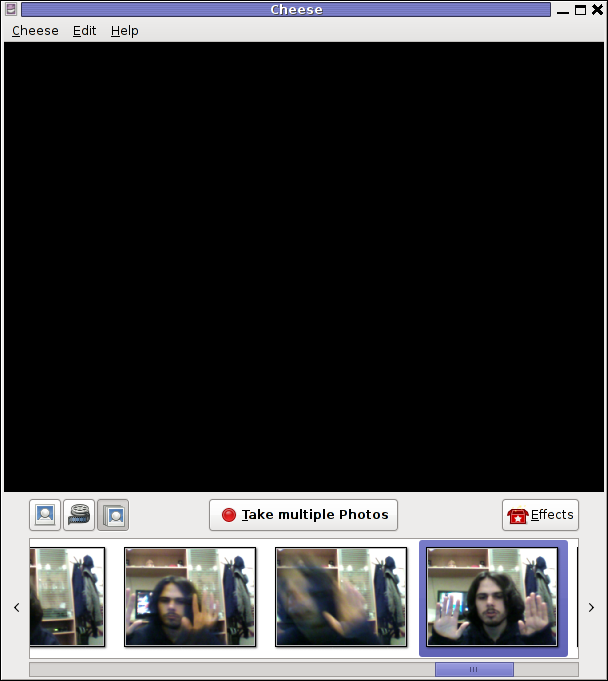
The program has support to apply 12 Effects / (Masks) to add some fun to the pictures or video snapshots.

Probably the best thing about Cheese is its simplistic interface, which for me personally is a main criterion to evaluate a program quality ;).
and on the camera all that is written is SUPER USB2.0 1.3 mega pixel
I bought exactly this camera because I was said by the shop reseller that the camera works without any driver installations on Windows XP and Windows Vista
On my Debian Squeeze GNU / Linux it was detected in dmesg without any troubles, here is how the camera got detected in my kernel log :
[25385.734932] usb 2-1: USB disconnect, address 4
[25388.905049] usb 2-1: new high speed USB device using ehci_hcd
and address 5 [25389.050753] usb 2-1: New USB device found,
idVendor=1e4e, idProduct=0102 [25389.050757] usb 2-1: New USB
device strings: Mfr=1, Product=2, SerialNumber=0 [25389.050760] usb
2-1: Product: USB2.0 Camera [25389.050762] usb 2-1: Manufacturer:
Etron Technology, Inc. [25389.050936] usb 2-1: configuration #1
chosen from 1 choice [25389.056056] uvcvideo: Found UVC 1.00 device
USB2.0 Camera (1e4e:0102) [25389.058242] uvcvideo: UVC non
compliance - GET_DEF(PROBE) not supported. Enabling workaround.
[25389.059113] input: USB2.0 Camera as
/devices/pci0000:00/0000:00:1d.7/usb2/2-1/2-1:1.0/input/input26I was troubled by the message uvcvideo: UVC non compliance - GET_DEF(PROBE) not supported. Enabling workaround. , and hence looked for an application to test if the camera can recored properly.
While checking in packages available in Software Center , I found a plenty of programs under the search keyword Camera
I however decided to test it using just one application Cheese - A tool to take pictures and videos from your webcam which I've seen to be quite popular among Liunx users.
Cheese is part of GNOME Desktop, so that was another reason I decided to give it a try. I was pleasently surprised about how good these tiny but functional proggie is.
Cheese has capabilities to take pictures, a consequential photos take up, as well as create Video movies.

The program has support to apply 12 Effects / (Masks) to add some fun to the pictures or video snapshots.

Probably the best thing about Cheese is its simplistic interface, which for me personally is a main criterion to evaluate a program quality ;).
Thu Dec 22 16:33:10 EET 2011
Geki2 and Geki3 a Xenon 2 Megablast like games for GNU / Linux and FreeBSD
Do you remember the old arcade
spaceship shooter Xenon 2 Megablast? I do  For all those who are
too young to remember, here are two screenshots:
For all those who are
too young to remember, here are two screenshots:
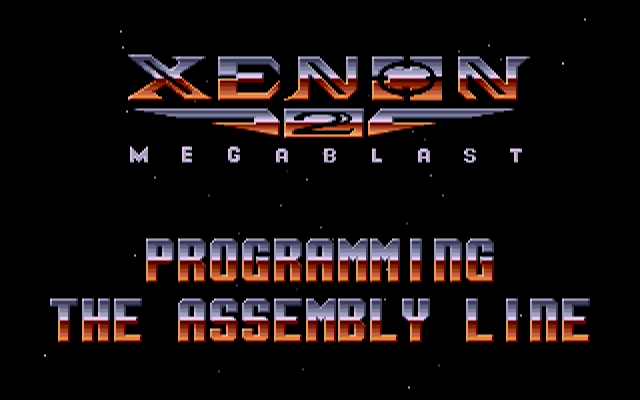
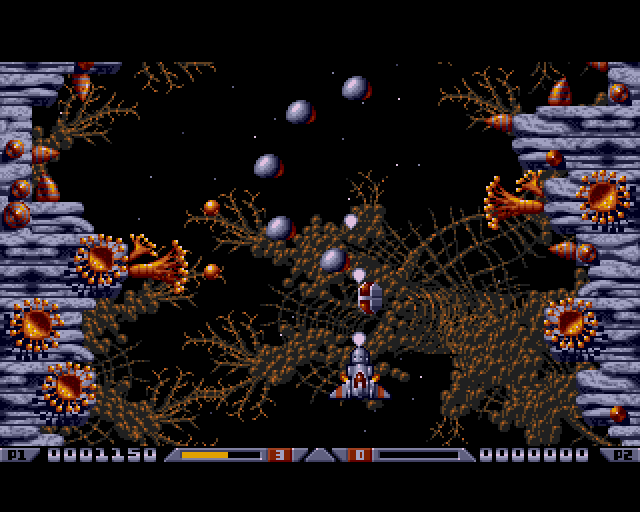
Even though Xenon 2 Megablast original can now be played using dosbox DOS emulator. Its interesting to mention I've found two Linux games that more or less can be qualitified to resemble Xenon 2.
The games are Native Free Software games and existing in package repositories of most Linux distributions and *BSD port trees.
Geki 2 and Geki 3 are of a less quality to Xenon but still, the game experience is nice and is among the Arcade shooter games to bring you fun in the boring days if you're on GNU / Linux or FreeBSD Free OS platforms.
Installing Geki2 and Geki3 on Debian and Ubuntu Linux is standard with apt:
On Debian GNU / Linux , after installed the games would not create GNOME Applications -> Games -> game startup shortcuts, however the game startups will get added in GNOME Applications Menu under:
The games can be launched also manually with commands:
geki2

or
geki3
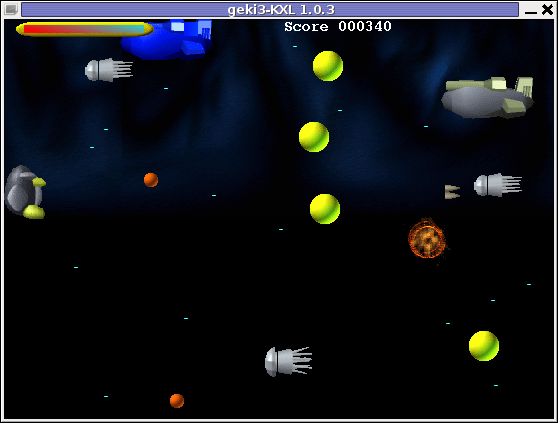
Geki 2 is a way closer to Xenon 2 as it has similar look and feel and the same vertical direction the spaceship is navigated.
In Geki 3 still the shoot 'em' up spaceship like arcade is present, however instead of penguin you have to fly a flying penguin instead of spaceship and the move on direction is horizontal.
Both the games have the same sound and music effects. The game music and effects are not of top quality but are not bad as well and surely gives some of the arcade atmosphere.
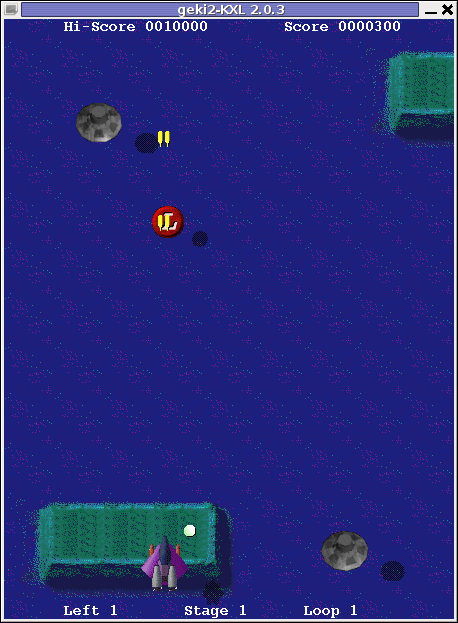
Geki 2 Xenon 2 Megablast like on Debian Linux
In the tradition of the arcade games at the end of each level in both games you face the Level Boss Enemy, you should destroy.
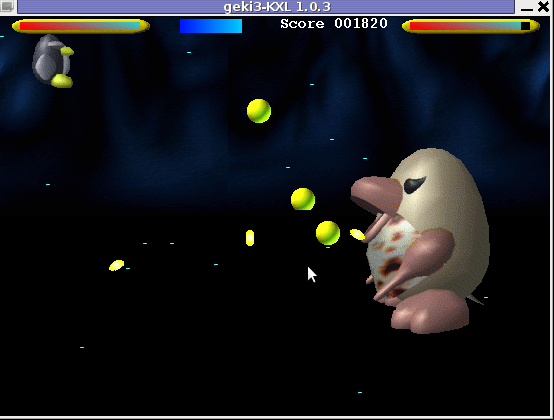
As you can see in below's screenshot the overall graphics of GEKI 3 is poorer if compared to GEKI 2

still GEKI 2 gampley is fun and addictive and I would say not less enjoyable than GEKI 2.
At times I even think that Geki 3 is more fun because of the game's dynamics.
Maybe the reason, why I enjoyed more Geki 3 is also the fact that Geki 2 is a way harder. Dying only 3 times in the game you get GAME OVER and the next game you're started from the beginning of the same level you died in.
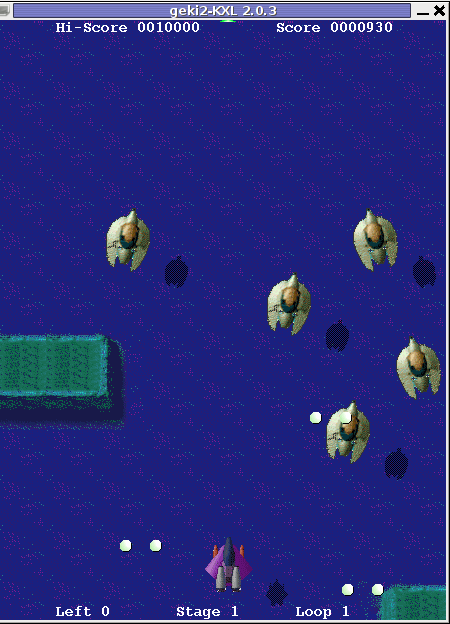
Something really annoying that affects both the games is there is no option to play them in Fullscreen mode.
Game controls for Geki2 and Geki3 are identical:
Geki2 and Geki3 are fun and can kill some time, but definitely aren't that (professional) as other spaceship shoot'em'up arcades like Starfighter , Critical Mass or powermanga
, though that they're two worthy games to install and keep on your Free Software OS.
 For all those who are
too young to remember, here are two screenshots:
For all those who are
too young to remember, here are two screenshots:

Even though Xenon 2 Megablast original can now be played using dosbox DOS emulator. Its interesting to mention I've found two Linux games that more or less can be qualitified to resemble Xenon 2.
The games are Native Free Software games and existing in package repositories of most Linux distributions and *BSD port trees.
Geki 2 and Geki 3 are of a less quality to Xenon but still, the game experience is nice and is among the Arcade shooter games to bring you fun in the boring days if you're on GNU / Linux or FreeBSD Free OS platforms.
Installing Geki2 and Geki3 on Debian and Ubuntu Linux is standard with apt:
debian:~# apt-get install geki2 geki3
...
On Debian GNU / Linux , after installed the games would not create GNOME Applications -> Games -> game startup shortcuts, however the game startups will get added in GNOME Applications Menu under:
Applications -> Debian -> Games -> Action -> Geki
2
and
Applications -> Debian -> Games -> Action -> Geki
3
The games can be launched also manually with commands:
geki2

or
geki3

Geki 2 is a way closer to Xenon 2 as it has similar look and feel and the same vertical direction the spaceship is navigated.
In Geki 3 still the shoot 'em' up spaceship like arcade is present, however instead of penguin you have to fly a flying penguin instead of spaceship and the move on direction is horizontal.
Both the games have the same sound and music effects. The game music and effects are not of top quality but are not bad as well and surely gives some of the arcade atmosphere.

Geki 2 Xenon 2 Megablast like on Debian Linux
In the tradition of the arcade games at the end of each level in both games you face the Level Boss Enemy, you should destroy.

As you can see in below's screenshot the overall graphics of GEKI 3 is poorer if compared to GEKI 2

still GEKI 2 gampley is fun and addictive and I would say not less enjoyable than GEKI 2.
At times I even think that Geki 3 is more fun because of the game's dynamics.
Maybe the reason, why I enjoyed more Geki 3 is also the fact that Geki 2 is a way harder. Dying only 3 times in the game you get GAME OVER and the next game you're started from the beginning of the same level you died in.

Something really annoying that affects both the games is there is no option to play them in Fullscreen mode.
Game controls for Geki2 and Geki3 are identical:
Up - Arrow up key
Down - Down arrow key
Right - Right arrow key
left - Left arrow key
Shoot - z or Space
Pause - s
Geki2 and Geki3 are fun and can kill some time, but definitely aren't that (professional) as other spaceship shoot'em'up arcades like Starfighter , Critical Mass or powermanga
, though that they're two worthy games to install and keep on your Free Software OS.
Wed Dec 21 15:29:56 EET 2011
GPL Arcade Volleyball - DOS Volleyball oldschool game remake for GNU / Linux remake
Do you remember that oldschool
Arcade VolleyBall game which was so popular on 16 bit (8086
XT) computers.
I remember this game from the years I was 12 years old, back in the days where we the gamers distributed all the DOS games on 360 KB 5.25" diskettes
I was looking over the games available to install on my Debian GNU / Linux today just to be happily suprised to find GPL Arcade Volleyball an identical game remake of the old Arcade Volleyball 8086 classic freeware game.

I remember we spend many hours with friends playing on the old Manifactured in Bulgaria Pravetz 16! computers
During communism and post communism Pravetz was the only computer brand we could buy from the market, as there was limitations on the exported and imported tech equipment within the USSR union.
Pravetz computers are a literal remake of 16 bit IBM 8086 computers and the computer design and integrals was stolen from IBM 16 bit 8086 / 8088 PC architecture
Arcade Volleyball has set a mark on my generation and I believe many people will remember the times this game was a hit with a bit of Nostalgia ;)
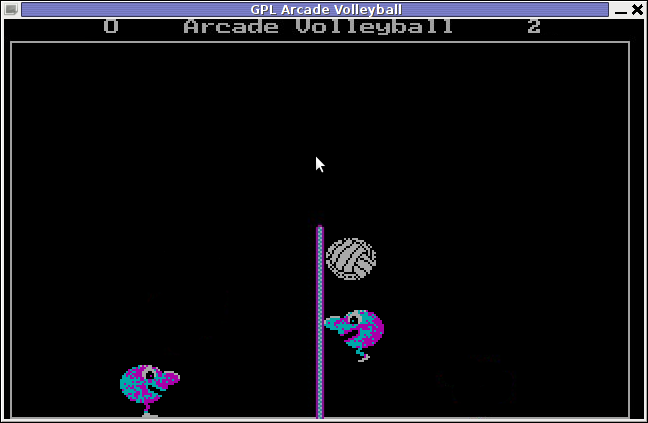
Besides being an identical remake of PC Arcade Volleyball , GPL Arcade Volleyball is even expanded as it includes extra features which the original game lacked. Game includes:
Here are few GAV screenshots of the different existing game Themes:
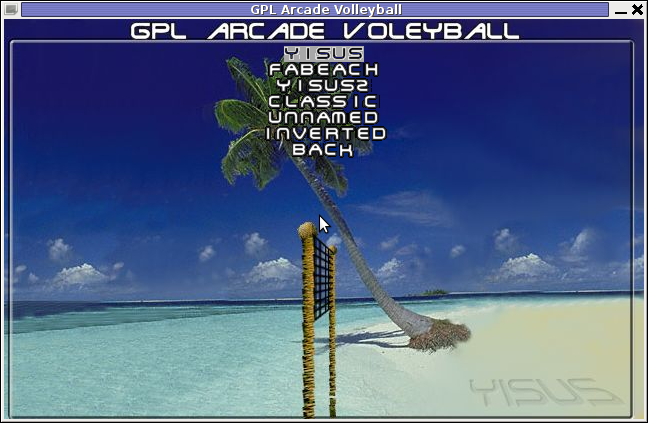
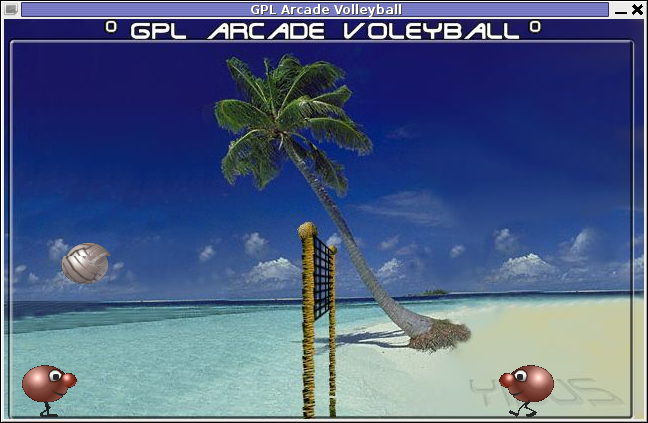
Yisus GAV Theme gameplay screenshot
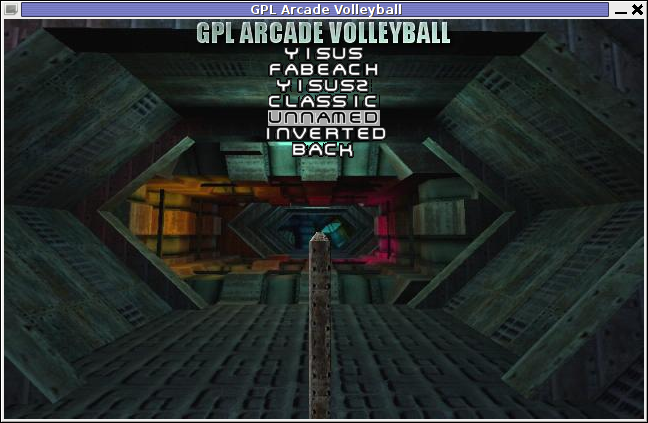
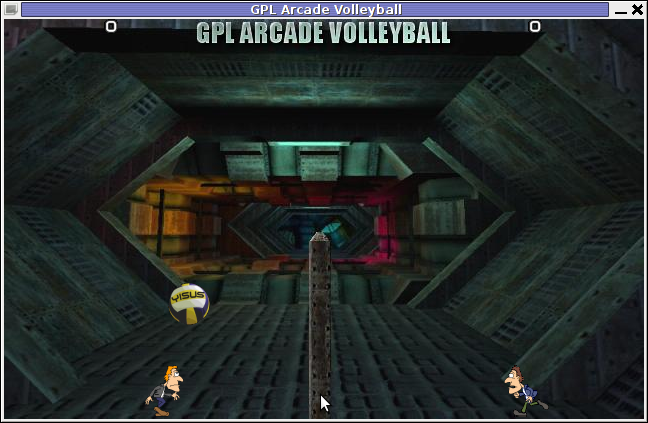
GAV - Unnamed Theme Gameplay
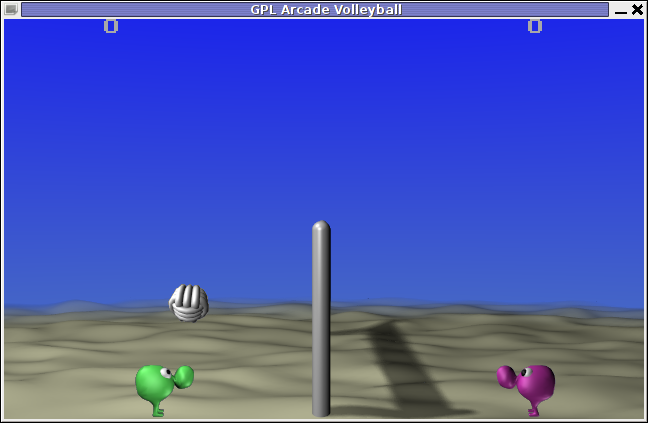
GAV - FaBeach Theme Gameplay
GAV supports both Window and fullscreen modes. To enable Fullscreen mode, while inside the game use:
Saving preferences is also something which I if I recall correctly the original game lacked. This is done by navigating to:
GAV is said to support Joystick in resemblance to the original DOS game, though I've never tested it with a joy.
One of the greatest GAV game (hacks) is the Inverted Theme. Selecting it inverts the order in the game, where the game player becomes the volleyball ball and the ball becomes the player ;)
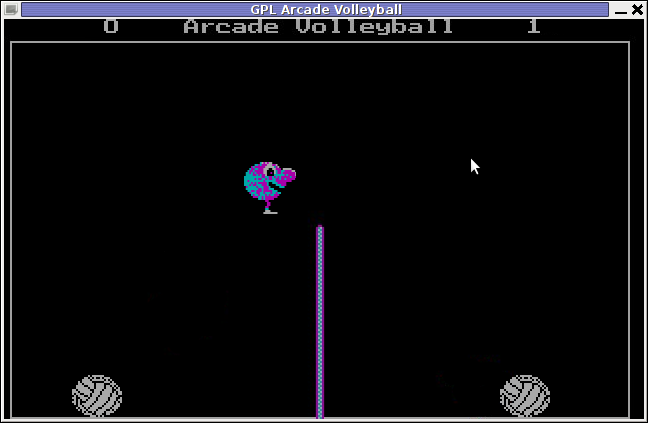
GAV does not yet not have a Free / Open / Net BSD port as far as I currently see, anyways since the game is Free Software probably soon a port will be available for BSDs as well.
The default GAV game controls are a bit untraditional. By default the one player game starts you play Volleyball game player positioned on the left.
For left player the default control keys are:
Right player controls are:
GAV supports also a shortcut key for switching between windowed and full screen game mode by pressing F10
Installing the game on Debian and Ubuntu Linuces is done with:
Unfortunately gav does not have a definition to be added to GNOME or KDE Applications menus, thus to start the game after installed one has to do it manually by typing either in gnome RUN (Alt+F2) or on command line:
Happy playing ;)
I remember this game from the years I was 12 years old, back in the days where we the gamers distributed all the DOS games on 360 KB 5.25" diskettes
I was looking over the games available to install on my Debian GNU / Linux today just to be happily suprised to find GPL Arcade Volleyball an identical game remake of the old Arcade Volleyball 8086 classic freeware game.

I remember we spend many hours with friends playing on the old Manifactured in Bulgaria Pravetz 16! computers
During communism and post communism Pravetz was the only computer brand we could buy from the market, as there was limitations on the exported and imported tech equipment within the USSR union.
Pravetz computers are a literal remake of 16 bit IBM 8086 computers and the computer design and integrals was stolen from IBM 16 bit 8086 / 8088 PC architecture
Arcade Volleyball has set a mark on my generation and I believe many people will remember the times this game was a hit with a bit of Nostalgia ;)

Besides being an identical remake of PC Arcade Volleyball , GPL Arcade Volleyball is even expanded as it includes extra features which the original game lacked. Game includes:
- Network Volleyball client / server Game (up to 4 players)
- 6 Game Themes which completely change the game look & feel to be modernistic
Here are few GAV screenshots of the different existing game Themes:


Yisus GAV Theme gameplay screenshot


GAV - Unnamed Theme Gameplay

GAV - FaBeach Theme Gameplay
GAV supports both Window and fullscreen modes. To enable Fullscreen mode, while inside the game use:
Extra -> Fullscreen (Yes)
Saving preferences is also something which I if I recall correctly the original game lacked. This is done by navigating to:
Extra -> Save Preferences
GAV is said to support Joystick in resemblance to the original DOS game, though I've never tested it with a joy.
One of the greatest GAV game (hacks) is the Inverted Theme. Selecting it inverts the order in the game, where the game player becomes the volleyball ball and the ball becomes the player ;)

GAV does not yet not have a Free / Open / Net BSD port as far as I currently see, anyways since the game is Free Software probably soon a port will be available for BSDs as well.
The default GAV game controls are a bit untraditional. By default the one player game starts you play Volleyball game player positioned on the left.
For left player the default control keys are:
- z - move player left
- c - move player right
- left shift - jump
Right player controls are:
- Left - left (arrow key)
- right - right (arrow key)
- jump - up cursor key
GAV supports also a shortcut key for switching between windowed and full screen game mode by pressing F10
Installing the game on Debian and Ubuntu Linuces is done with:
linux:~# apt-get --yes install gav
Unfortunately gav does not have a definition to be added to GNOME or KDE Applications menus, thus to start the game after installed one has to do it manually by typing either in gnome RUN (Alt+F2) or on command line:
linux:~$ gav
Happy playing ;)
Wed Dec 21 12:47:48 EET 2011
Communistic Government BCP epoch deliberately tried to destroy the Bulgarian Orthodox Church

As a Child I've been baptized in the Orthodox Church and since then I've been a complete atheist until the age of 21.
What is the reason to get my faith in God in 21? This is a short post to shed some light on the great efforts of communism to erradicate faith in God in Communistic countries and change faith in God with faith in man and how this kind of approach devastates societies.
During the communism it's a well known fact that communists, all the members in the Bulgarian Communist's Party (BCP), has led an anti Bulgarian Orthodox Church government politics. The fact that Communistic Governments are fighting Churches and faith in God is less known among youngesters and hardly known by people part of western democratic societies.
I did not lived this time myself, but I heard many stories about the stupidities of communism.
Many older people say, when communism came to rule the Communist Government did immediately destroy some Orthodox Christian temples, some priests were convinced in crimes they were not responsible for etc...
Other priests were send in the Concentration camps and many of them never returned in the society.
"Access" to the Churches was limited and sometimes prohibited to the orthodox layman and often to clergy.
During these terrible communism era, it was prohibited to everybody who is a member of BPC to attend Orthodox Church services or identify himself as christian in public.
I've heard from my grandma an interesting story she witnessed, while she was working as a cleaner in the militia (police).
Here is the story:
One day my grandma wanted to go to the Church St. George located on the city centre of Dobrich city Bulgaria.
A policeman stopped her when she was entering the temple and since he knew her as an employee in the police called her by name and told her that she is not allowed to enter the church building, because she is working in the police.
My grandma asked the militiaman to let her enter the temple to pray for just few minutes and light up a candle (just for this time) without reporting for that in the police.
The policeman agreed to let us in and keep silent that she entered the Church this time,but warned her that if he sees her another time entering the church he is going to report to the respective authorities.
Another part of the Government active politics against the Bulgarian Orthodox Church was by placing an ex-criminals who were sentenced for thefts, rapings, agression or other crimes as a priests in the Church.
By this move the supreme counsel of the bulgarian communist party wanted to break the people confidence in the Church as the true holy apostolic Church. The most fierce communists during these days did their best to present the church of God as a corrupted and void institution who only steals from people and exists only to deceive society.
Yet many years after the fall of communism this people distrust in the church that communists sow through the years.
What is pity is even after the communism is gone for a long, time the churches are only full on biggest feasts and no more than 5% of the citizens are regularly going for Church service or have even the basic knowledge on the Church truths and mysteries.
Following the fall of communism the democratic governments who come to power, elected in a citizen democratic elections did not do much to help the church either, some of them does lead politics openly hostile to our Bulgarian Church.
The last government selected, seems to be less hostile to our Church, but people have once been cut away from the Church and now its really hard for our nation to get back to faith.
The severe crisis (a word that means judgement in greek) and the hardships many people experience started to make some people rethink about what is the meaning of life and made them occasionally go back to faith of our fathers orthodoxy.
What will happen further nobody knows, we need to pray and hope God will have mercy and people will repent for their sins and come back to faith again.
Tue Dec 20 15:42:08 EET 2011
Alex the Alligator - a nice retro style Nintendo / GameBoy like Free Software game for GNU / Linux
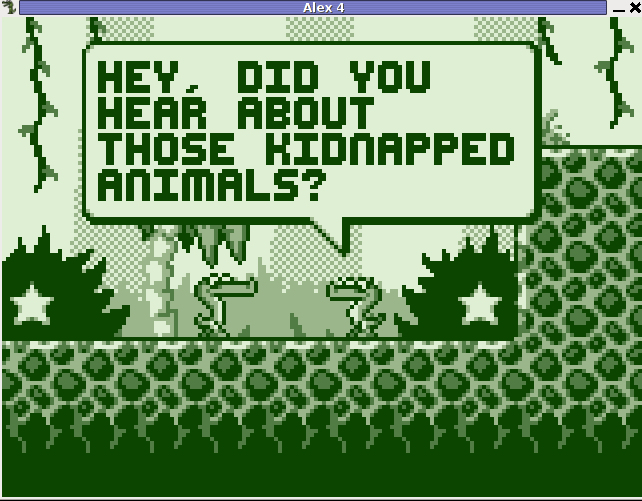
Alex the Alligator is a Free Software (Open Sourced) arcade game licensed under the General Public License (GPL)
The game is quite of fun and especially the music totally kicks ass! ;)
The game plot is simple but fun in the good Spirit of oldschool Super Mario like arcade games.

In the game you are a little cute crocodile whose (crocodile) girlfriend is kidnapped with a helicopter by the evil human poachers.
As you love her too much and you're determined to grow a crocodile family with this croco-girl you start a long quest to save her from possible zoo slavery or killing for a crocodile skin boots.
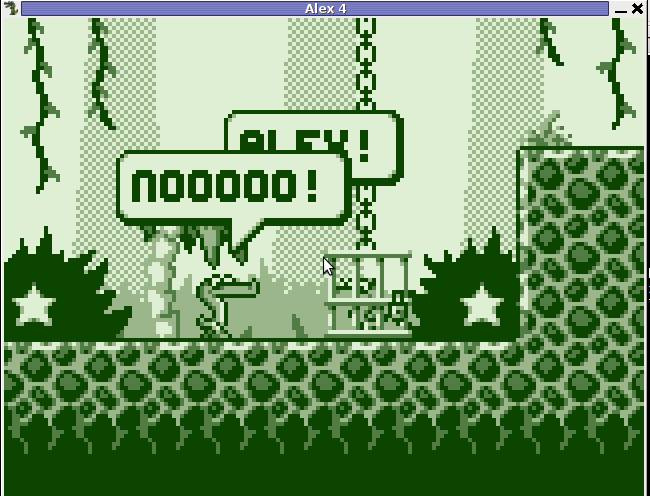
The quest for kidnapped girlfriend (LOLA) liberation wents through the harsh jungles.

Alex The Alligator has a version for both Windows and Linux ports. The Linux port is available for most major distributions including Debian, Ubuntu, Fedora etc.
To install the game on Debian and Ubuntu with apt-get issue:
debian:~# apt-get --yes install alex4
...
After installing the game can be run from command line using cmd:
alex4
The game controls are as follows;
- Arrow Keys - Movement
- Alt - Jump
- Ctrl - Fire (if you have previously collected Eggs
Alex the Alligator is also equipped with a MAP editor, so if you really want to contribute the game development, take some time create some maps and submit to game's official website http://allegator.sourceforge.net/ . On the game website there are few other variations of the Alex the Alligator as well as extra game maps.
Explanation on which keys can be used to create maps is found in the game manual, e.g.:
debian:~$ man alex4
If you have downloaded some extra game maps from the game sourceforge website, to load them you can use:
Shift+L
Will Alex succeed in saving his girlfriend ? It's up to you ;)
Mon Dec 19 16:30:05 EET 2011
Nikwi Deluxe a top quality Freeware Debian / Ubuntu Linux Jump and Run Arcade Game
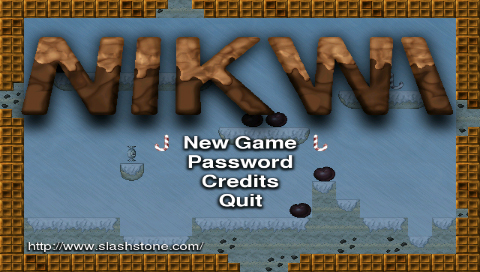
Nikwi Deluxe is another good quality jump and run game for Linux
The main actor you play with is a (Dexter like) looking kid who has to collect all candy items on the level screen. The game graphics are quite a good level if compared to the most Linux jump and run games.
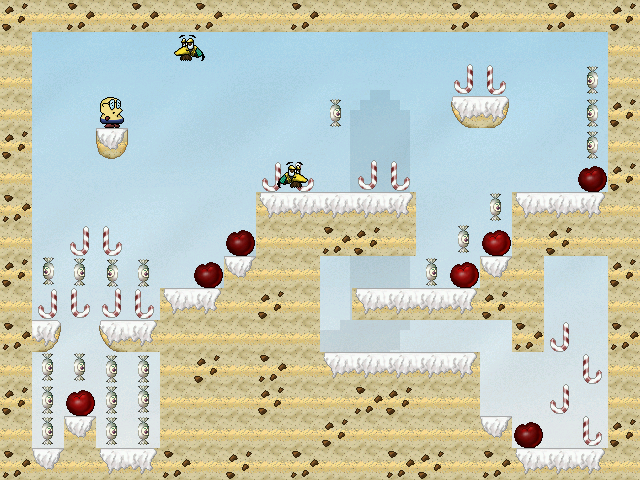
Your game hero is not equipped with any weapon or (jump over the enemies like in Maries) and you not haven't got any mean to kill enemies, but you have to always avoid them. There are some funny looking crawl (birds) shitting from the above every now and then, if you're hit by a the bird's droplet you die. The game has 30 levels and after each level succesful completion you're provided with a password that can be used as a "Save Game" like if you quit from game and on next game run you would like to start directly from the last game level you reachedNikwi Deluxe is another good quality jump and run game for Linux

The only game downfall is the missing music as well as the not too brilliant sound. To boost my game experience, however put some background music and give the game a try ;)
Sat Dec 17 14:37:15 EET 2011
Little Registry Cleaner (Free Software / Open Source Windows XP Registry Cleaner)

Have you ever wondered, if there is a free (open source) software that could fix Windows XP registry irregularities e.g. (obsolete or unwanted items that build up in the registry over time.)?
I did not either until now, however when I had to fix, few Windows XP computers which was not maintained for a long time fixing the Windows registry was necessery to make the sluggerish computers improve their overall stability and performance.
The reasons of the slowness in computers who run for a long time by users who does not have a "computer culture" are obvious.
Windows programs which has incorrectly placed registry records withint the Windows registry database, Programs which on Uninstall / Removal left behind a lot of registry records just to hang around because of impotent (coders), or records created on purpose on program uninstall to intentionally further track the user behavior etc.
Other reasons why Windows registry gots bloated with time, are due to Malware or polymorphic Viruses which load them selves everytime on Windows load using some obscure registry records.
Though I'm not a big proprietary software lover still my job as a system administrator , enforces me to fix some broken Windowses.
I haven't fixed Windows machines for a long time, so my memories on programs that clean up registry are from my young years.
The software, I've used before to fix Windows 2000 / XP Registry was:
1. Registry Booster
From my current perspective of a free software hobbyist / evangelist it was important for me to clean up the Windows PCs with a program that is Free or Open Source Software.
When I'm asked to fix some Windows computer I always do my best to make most of the programs that roll on the PC to be FOSS.
Using FOSS instead of downloading from torrents, some cracked software has multiple benefits.
1. Usually Free Software is more stable and more robust 2. FOSS software for Windows usually does not come with Malware / Spyware as many of the cracked proprietary software
3. Free and Open Source Programs are simplistic in interface and way of use
A bit of research if there is a Free (Open Source) Software immediately lead me to a program called Little Registry Cleaner
You can see a screenshot of the program in the beginning of the article, the program is very easy to install and use and uses some .NET framework classes so right before installing it installs .NET library (code).
The use results of Little Registry Cleaner were amazing. Even though it is a free software the program found and fixed more registry problems than its competitor Windows Registry Booster! ;)
Fri Dec 16 14:09:57 EET 2011
Frogatto & Friends - One of the TOP 10 Arcade Free Software & Open Source Games for GNU / Linux and FreeBSD
1. Frogatto & Friends - Is an Indian Free Software (Open Source) game in the spirit of old-school jump'en runs like Commander Keen, Prehistoric, Jazz Jack Rabbit
The game is really entertaining, the graphics looks approximately nice, the music is awesome, the gamelplay is good even though after some point in the game the moment with "where should I go now, I can't find exit" comes through and it gets boring.
Generally if you compare with all the existing jump and run arcade games free software games available for Linux and FreeBSD the game will definetely arrange itself in the list of TOP 10 free software Arcade Games
and therefore its my own believe that Frogatto is a game that every GNU / Linux and FreeBSD desktop should have in Application -> Games GNOME menu.
Frogatto is rich of levels, enemies obstacles objects, places to visit (which puts it ahead of many of the linux arcade games which often miss enough game levels, has a too short game plots, or simply miss overall game diversity).

The game's general look & feel is like a professional game and not just some tiny free software arcade, made by its authors for the sake to learn some programming, graphics or music creation.
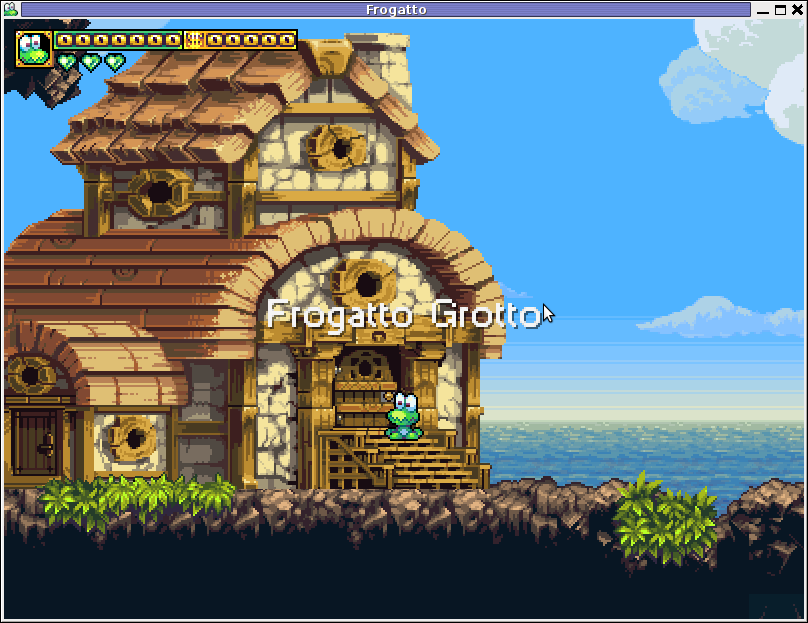

Besides that Frogatto & Friends is multi-platform supporting all the major operating systems.
Game supports:
- Windows
- Mac
- iPhone
- Debian GNU / Linux
- FreeBSD
The game source code is also available on Frogatto.com - The Game's Official website
The game is available as a deb package in Debian and Ubuntu GNU / Linuxes so to install on those deb based distributions, simply use apt:
debian:~# apt-get install frogatto
...
The above command will install two packages frogatto (containing the game's main executable binary) and frogatto-data containinng all the game textures, levels, graphics, music etc.
BTW the package saparation on a gamename and gamename-data in Debian (for all those who have not still noticed), can be seen on most of the games with a game data that takes more disk space.
After the game is installed the only way to start the game is to run it manually through pressing ALT+F2 in GNOME or running the progrtam through gnome-terminal with cmd:
debian:~$ frogatto
Here are few more Frogatto gameplay screenshots:
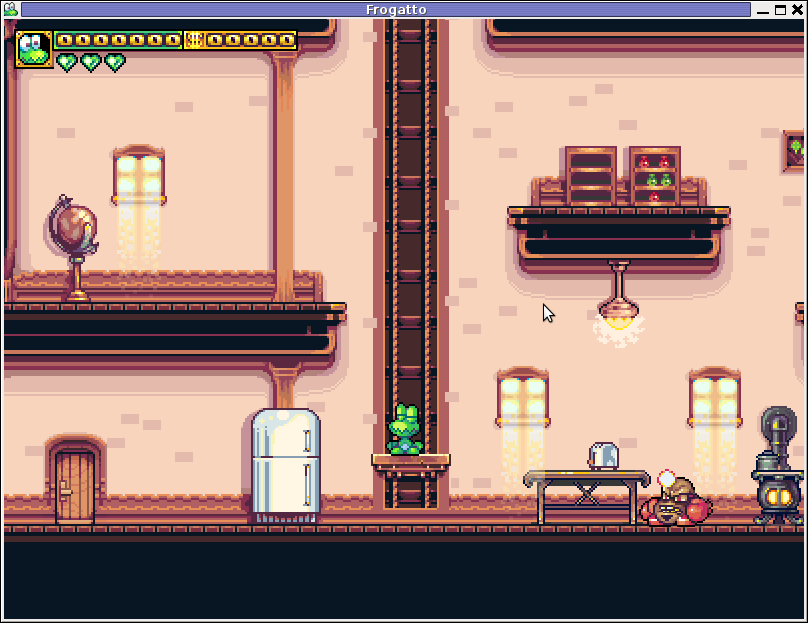

I've noticed Frogatto is also available as an RPM package for Fedora Linux, as well as has a FreeBSD port in the /usr/ports/games/frogatto and this makes it easy to install on most free software OSes in the wild.
While checking frogatto.com , I found an interesting link to a website offering free graphics (pictures), textures and sounds for free and open source games for all those who hold interest into the development of Free Software & Open Source Games make sure you check OpenGameArt.org
OpenGameArt.org looks like a great initiative and will definitely be highly beneficial to the development of more and better FSOS Games so I wish them God speed with this noble initiative.
Frogatto is very suitable for growing kids since it doesn't contain no violence and every now and then the main game actor the Frogatto Frog leads few lines English dialogues with some of the characters found in the quest.
For none speaking English countries, the game can help the kids to learn some basic english words and thus can help develop kids intellect and knowledge
And oh yeah one more criticism towards the game is the Enlish structure, it seems people who wrote the plot can work this out in the time to come. Many of the English sentences during dialogues the frog leads with the cranks he met does not sound like a common and sometimes even correct english / phrases.
Besides those little game "defect", the game is pretty awesome and worthy to kill some time and relax from a long stressy day.
Thu Dec 15 10:15:09 EET 2011
How to take a screenshot of a game or Full Screen running program inside GNOME or KDE desktop environment on GNU / Linux and FreeBSD
I'm writting some game reviews and
movie reviews, every now and then and therefore being able to
capture a fullscreen running program like let's say mplayer
or vlc or some full screen running game is something I
really need.
The usual PrtScr button which normally works to prepare screenshots in GNOME or KDE, however is not working if the root window handler is being passed to a different program than the Window Manager and pressing it while inside of many older programs or applicationsdoes not produce a print screen of the current screen.
Anyways I found a hack to this using the good old ImageMagick - import command line screenshotting program.
To take a screenshot of a certain program run from gnome-terminal or konsole using import cmd its possible to use a quick one liner which will take a snapshot of the root Window the started program will use.
Let's say you want to make a screenshot of the entry screen of the FreeDOOM (DooM 3d shooter classical game arcade free Software Alternative).
Launch gnome-terminal or konsole , xterm , depending on the GUI environment you use and issue the commands:
The first command will launch import after a sleep of 15 secs and therefore will screenshot the active window which will be at focus after 15 seconds, where the & sign will background it and the second one will launch FreeDooM . You will have to wait for a certain secs and switch to the exact screen you will want to screenshot.
If you want to screenshot some game scene that will appear in 20 minutes change above sleep 15 cmd to be to something like sleep 180
That method can be used for screenshotting any other program running on fullscreen, the method is a bit inflexible as you will have to adjust a timing but it works fine ;)
The usual PrtScr button which normally works to prepare screenshots in GNOME or KDE, however is not working if the root window handler is being passed to a different program than the Window Manager and pressing it while inside of many older programs or applicationsdoes not produce a print screen of the current screen.
Anyways I found a hack to this using the good old ImageMagick - import command line screenshotting program.
To take a screenshot of a certain program run from gnome-terminal or konsole using import cmd its possible to use a quick one liner which will take a snapshot of the root Window the started program will use.
Let's say you want to make a screenshot of the entry screen of the FreeDOOM (DooM 3d shooter classical game arcade free Software Alternative).
Launch gnome-terminal or konsole , xterm , depending on the GUI environment you use and issue the commands:
debian:~$ ( sleep 15; import -window root
my_desired_screenshot_name.png ) &
debian:~$ freedoom
The first command will launch import after a sleep of 15 secs and therefore will screenshot the active window which will be at focus after 15 seconds, where the & sign will background it and the second one will launch FreeDooM . You will have to wait for a certain secs and switch to the exact screen you will want to screenshot.
If you want to screenshot some game scene that will appear in 20 minutes change above sleep 15 cmd to be to something like sleep 180
That method can be used for screenshotting any other program running on fullscreen, the method is a bit inflexible as you will have to adjust a timing but it works fine ;)
Wed Dec 14 16:46:47 EET 2011
Abe's Amazing Adventure, A Dangerous Dave 2 like GNU Linux / FreeBSD Arcade Game substitute
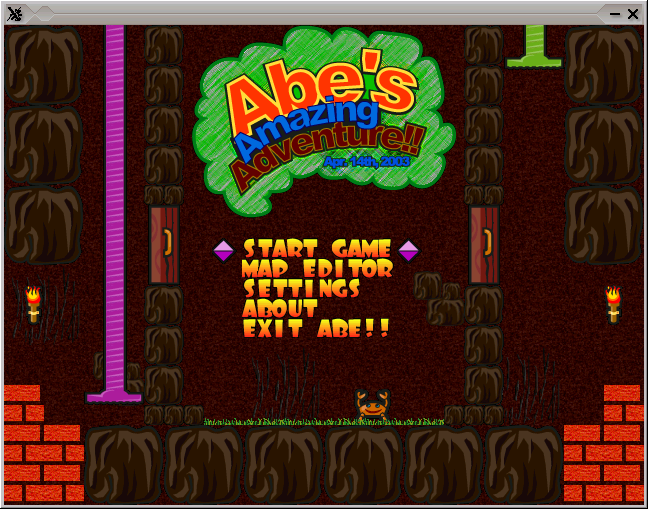
While looking over the installable packages in System -> Administration -> Software Center on my my Debian powered notebook, I've accidently rolled over a game called Abe's Amazing Adventure , as a big oldschool arcade game fan, I've immediately clicked on Install being impatient to see the overall game atmosphere and gameplay as well as storyline.
Abe's Amazing Adventure is available under the debian package name abe and can be installed by issuing:
debian:~# apt-get install abe
I was pleasently
surprised to find out the gameplay and the overall game feels like
the golden classical arcade game Dangerous DaveFor youngsters who never played the amazing absolute killing arcade ! as well as for people who feel nostalgic about Dangerous Dave 2 here is a nice gameplay screenshot:

Here is also a screenshot of Abe's Amazing Adventure gameplay:
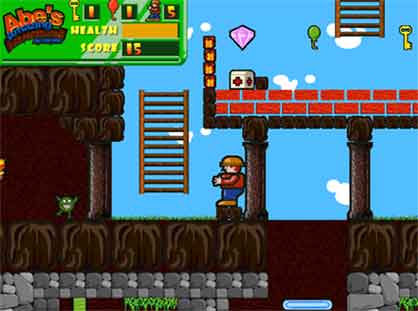
You can see the great resemblense between the two games even by the screenshot; In both games you have to collect keys to open doors and diamonds which gives you points. Of course there are some differences as you can see Abe's Amazing Adventure 's graphics has some additional items like Baloons with which your main character can fly over distances (for a limited time). There is also more diversity in the enemy types you face on the road to unlock the different doors. The game has also a red stars which while taken saves the game so if you quit the game on next game load up starting the game automatically starts you from the last save point.
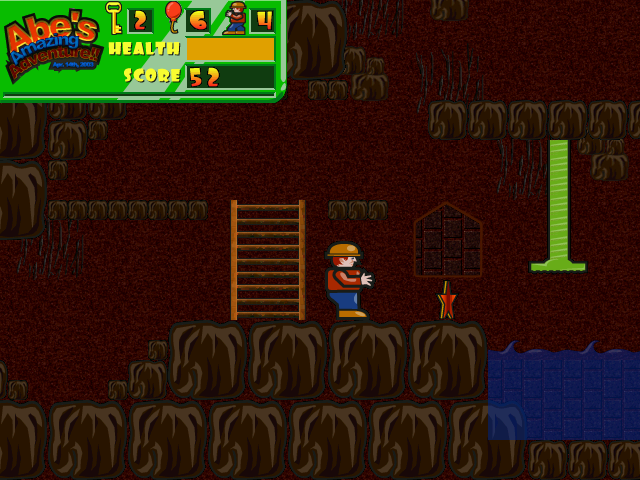
The ( 6 ) baloons seen in the screenshot on the left upper corner can be used occasionally to fly some distance by pressing Enter .
There are health recovery kits one can take to recover, some health damaged by hitting obstacles on the way.
The game story is short but entertaining, just like the general game feel:

The game music is relaxing and more or less in the spirit of arcade games, the keyboard interactivety is pretty good as well. One thing I see can be improved to make the game better are the graphics, they're a bit childish and too cubical, where sometimes some more general characters and obstacles animation will give the game a better look. Anyways for the year 2003 and for a free software arcade the game is not bad. For children and growing kids the game is just perfect, even for big kids like me its good to spend an hour of jump and run fun ;)
Wed Dec 14 11:13:22 EET 2011
How to install Linux or *BSD to USB flash drive (memory stick) using Debian GNU / Linux
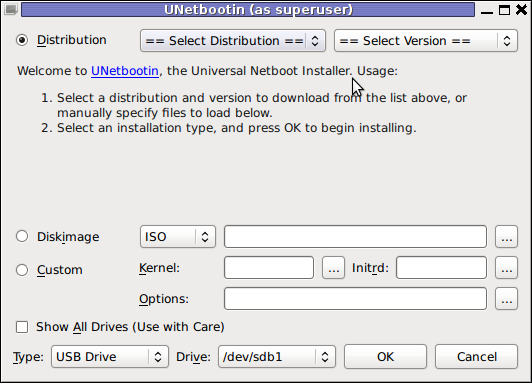
UNetbootin is a nice easy to use Free Software Universal mutli OS program that makes creation of Bootable USB Stick Linux, FreeBSD, NetBSD and other free operating systems a piece of cake
UNetbootin support the three major operating system architectures Windows, Mac OS X and GNU / Linux .
In Debian and Ubuntu based distributions Unetbootin is available as a deb binary package:
debian:~$ dpkg -l |grep -i 'usb' |grep -i 'install'
ii unetbootin 471-2
installer of Linux/BSD distributions to a partition or USB
drive
To install it with apt:
debian:~# apt-get install unetbootin
...
debian:~# unetbootin
Alternatively for all those who prefer to run it via the GNOME Application menu follow to the menu path:
Applications -> System Tools ->
Unetbootin
If the program is launched with non privileged account (like via GNOME Application menu), in order to to properly tamper with any connected USB Flash drive you will be asked about the super user password.
The shipped uniboot version in current Debian stable version Squeeze is 471-2 is a bit outdated. For everyone eager to use the latest version which as of time of writting is 565 check out UnetBootin's Official Homepage on SourceForge
Installing the distributed binary of unetbootin downloadable from its website is a trivial one. Simply download the file from the Download (for Linux) link and run the binary unetbootin-linux-565:
debian:~$ ./unetbootin-linux-565
There is one annoying thing about the latest downloadable (static compiled) unetbootin version, it was built to run using KDE's QT library and therefore the interface that poped up while trying it was KDE like, pitily did not take advantage of my native GNOME GTK2 library :
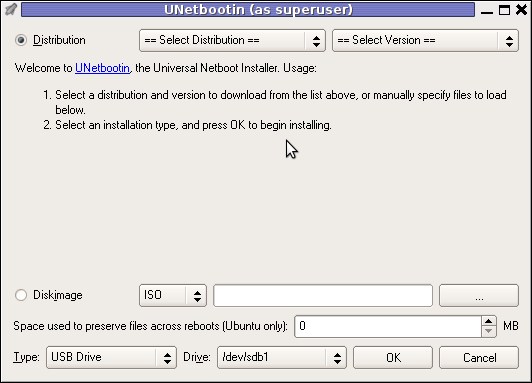 Though this little note, unetbootin developers has done a
truly great job! I tried unetbootin and was more than pleasently
surprised that it prepares bootable USB sticks with only 4 mouse
clicks!!! ;)
Though this little note, unetbootin developers has done a
truly great job! I tried unetbootin and was more than pleasently
surprised that it prepares bootable USB sticks with only 4 mouse
clicks!!! ;)The program worked out of the box without any external or additional hacks like many of the programs I daily use it just worked ;)
UNetbootin has a thoroughful list of Free Software operating system distributions in the distributions list. Many of the offered Open Source & Free Software distributions has even possibility of installing a multiple versions of the respective distro.
Here is a complete list of all the Free & Open Source Operating Systems, unetbootin program can burn and make bootable on USB stick.
- 1. Ubuntu
- 2. Debian
- 3. Fedora
- 4. PCLinuxOS
- 5. Linux Mint
- 6. Sabayon Linux
- 7. Gentoo
- 8. OpenSUSE
- 9. MEPIS
- 10. Zenwalk
- 11. Arch Linux
- 12. Slax
- 13. Dream Linux
- 14. Damn Small Linux
- 15. SliTaz
- 16. Elive
- 17. CentOS
- 18. Puppy Linux
- 19. Mandriva
- 20. FreeBSD
- 21. LinuxConsole
- 22. Frugalware Linux
- 23. NetBSD
- 24. xPUD
- 25. gNewSense
- 26. GeeXboX
- 27. Gujin
- 28. Kaspersky Rescue Disc
- 29. NimbleX
- 30. Sabayon Linux
- 31. Puppy Linux
- 32. Mandriva
- 33. SuperOS
- 34. Xubuntu
- 35. Parted Magic
- 36. Super Grub Disk
- 37. Smart Boot Manager
- 38. 0phcrack
- 40. FreeNAS
- 41. NetBootCD
- 42. FreeDOS
- 43. Dr. Web Antivirus
- 44. CloneZilla
- 45. Kubutun
- 46. BackTrack
To burn and make bootable on the USB flash drive any of the listed distributions, choose the distribution name and version number as well as the Drive: (which usually will be selected by default to the first sticked USB drive let's say /dev/sdb1).
Afterwards press on the OK button and that's it, lay down your back and wait until the distribution is downloaded from the Internet, burned into the USB pendrive and made bootable.
I've tested Unetbootin with two distributions;
1. Xubuntu 10_04_live and;
2. Fedora 13
Both of the distributions got burned properly to the CD drive and booted fine on a Packard Bell notebook on which I booted them from the USB.
Having an USB drive with LiveCD GNU / Linux or BSD everywhere with you is handy. Now I can move to any PC installed with Windows and use my preferred Free Software OS.
Besides that, there are laptops whose CD-ROM / DVD-ROM drive is broken and therefore if one wants to re-install an improperly working Windows XP / Vista / 7 and substitute with Free operating system this task is only possible using USB Flash Disk or NetBoot Install.
Installing using USB has its advantageous as you don't depend on the network as well as the installation from USB is in most of the cases few times faster.
There are plenty of other USB Linux installer programs, most of them however are only available with a Windows version.
Here are few prgrams which can be used to burn a number of Linux and *BSD installations using Microsoft Windows to create Linux / BSD liveUSB:
- Universal USB Installer - http://live.learnfree.eu/download
- YUMI - Your Universal Multiboot Installer - http://www.pendrivelinux.com/yumi-multiboot-usb-creator/
- xBOOT - http://sites.google.com/site/shamurxboot/
I was happy to find outUniversal USB Installer (a proggie written in Python) is made by a Bulgarian mate! Proud to be Bulgarian ;)
Universal USB Installer is actually multiplatform since written in Python and in this number can be used to burn a LiveUSB on GNU / Linux and (possibly on FreeBSD?)
I would be glad to get feedback from other people who had experience with programs to prepare LiveUSB bootable sticks on Free Software OSes. Does anybody tried that on who *BSDs? Cheers ;)
Tue Dec 13 18:26:21 EET 2011
Facebook and Youtube Culture has a negative impact on people in young years development and teenagers
Facebook and Youtube
has become for just a few years a defacto standard service for 80%
of computer users in our age.
This is true and it seems there is growing tendency for people to adopt new easy to use services and a boom in the social networks.
We've seen that with the fast adoption of the anti-human freedom program Skype , the own privacy breaching FaceBook as well as the people interests tracking service YouTube.
We've seen similar high adoption rates in earlier times as well with the already dying (if not dead MySpace), with the early yahoo mail boom etc and in even earlier times with the AltaVista search engine use.
However this time it appears Youtube and FaceBook are here to stay with us and become standard online services for longer times ...
Many people who work in office all day staring in a computer screen as well as growing teenagers and practically anyone in the developed and the development world is using those services heavily for (in between 5 to 10 hours a day or more). The Software as a Service users spends approximately half of their time spend on the internet in Youtube or and Facebook.
Its true Youtube can be massively educative with this global database of videos on all kind of topics and in some cases facebook can be considered helpful in keeping in touch people or keeping a catalog of pictures easily accessible from everywhere, however when few services becomes more used and influential than other provided services on the internet this makes these services harmful to the communities and destroyes cultures. The concentration of most of the human popuplation who uses high technologies around few online services creates a big electronic monopoly. In other words the tendency, we see of amalgamation of businesses in real world (building of big malls and destroyment of small and middle sized shops is being observed in the Internet space.
Besides that Facebook and Youtube and Twitter are highly contrary to the true hacker spirit and creates a big harm for intellectuals and other kind of tight and technical community culture by creating one imaginative casual disco culture without any deepness of thought or spirit.
Its observable that most of the people that are heavily using those services are turning into (if not exaggerate) a brainless consumer zombies, a crowd of pathless people who watch videos and pictures and write meaningless commentaries all day long.
You have as a result a "unified dumbness" (dumbness which unifies people).
Even if we can accept the grown and fully formed character people are aware of the threats of using Youtube or Facebook, this is definitely not the case with the growing people which are still in a process of building personality and personal likings.
The harmful resuls that the so called Social networks create can be seen almost everywhere, most of the cafeterias I visit the bar tender uses facebook or youtube all da long, most of random people I see outside in a coffee or university or any public institution where internet access is available they are again in Youtube and Facebook. The result is people almost did not use the Net but just hang around in those few services wasting network bandwidth and loading networks and computer equipment and spending energy for nothing. The wasteful computer and Internet deepens the ecologic problems as energy is spend on nonsense and not goal oriented tasks but on "empty" false entertainment.
Hence the whole original idea of internet for many is changed and comes to few words ( Skype, Youtube, Facebook etc.
Besides that youngsters instead of reading some classical valuable books, are staring in the computer screen most of their cognitive time at only this few "services" and are learned to become more a consumers than self opinion thinkers and inventors.
I have not lately met any growing real thinking man. I've seen already by own experience the IQ level of younger generations than mine (I'm 28) is getting downer and downer. Where I see as a main cause the constant interaction with technology built in a way to restrict, a consumers technology so to say.
Facebook and Youtube puts in young and growing man's mind, the wrong idea that they should be limited choice people always praising what is newest and brightest (without taking in consideration any sight effects). These services lead people to the idea that one should always be with the crowds and never have a solid own opinion or solid state on lifely matters. As said own opionion is highly mitigated especially in facebook where all young people try to look not what they really are but copy / paste some trendy buzz words, modern style or just copying the today's hearoes of the day. This as one can imagine prevents a person of getting a strong unique self identity and preference on things.
Many of the older people or computer illiterates can hardly recognize the severe problems, as they're not aware on the technical side of things and does not realize how much security compromising as well as binding the constant exposure to those online hives are.
The purpose of this small post is hence just a small attempt to try to raise up some awareness of the potential problems, we as society might face very soon if we continue to follow the latest buzz trends instead of stop for a moment have a profound think on what is the moral consequences of giving so much power on Internet medias like Facebook and Youtube? ...
This is true and it seems there is growing tendency for people to adopt new easy to use services and a boom in the social networks.
We've seen that with the fast adoption of the anti-human freedom program Skype , the own privacy breaching FaceBook as well as the people interests tracking service YouTube.
We've seen similar high adoption rates in earlier times as well with the already dying (if not dead MySpace), with the early yahoo mail boom etc and in even earlier times with the AltaVista search engine use.
However this time it appears Youtube and FaceBook are here to stay with us and become standard online services for longer times ...
Many people who work in office all day staring in a computer screen as well as growing teenagers and practically anyone in the developed and the development world is using those services heavily for (in between 5 to 10 hours a day or more). The Software as a Service users spends approximately half of their time spend on the internet in Youtube or and Facebook.
Its true Youtube can be massively educative with this global database of videos on all kind of topics and in some cases facebook can be considered helpful in keeping in touch people or keeping a catalog of pictures easily accessible from everywhere, however when few services becomes more used and influential than other provided services on the internet this makes these services harmful to the communities and destroyes cultures. The concentration of most of the human popuplation who uses high technologies around few online services creates a big electronic monopoly. In other words the tendency, we see of amalgamation of businesses in real world (building of big malls and destroyment of small and middle sized shops is being observed in the Internet space.
Besides that Facebook and Youtube and Twitter are highly contrary to the true hacker spirit and creates a big harm for intellectuals and other kind of tight and technical community culture by creating one imaginative casual disco culture without any deepness of thought or spirit.
Its observable that most of the people that are heavily using those services are turning into (if not exaggerate) a brainless consumer zombies, a crowd of pathless people who watch videos and pictures and write meaningless commentaries all day long.
You have as a result a "unified dumbness" (dumbness which unifies people).
Even if we can accept the grown and fully formed character people are aware of the threats of using Youtube or Facebook, this is definitely not the case with the growing people which are still in a process of building personality and personal likings.
The harmful resuls that the so called Social networks create can be seen almost everywhere, most of the cafeterias I visit the bar tender uses facebook or youtube all da long, most of random people I see outside in a coffee or university or any public institution where internet access is available they are again in Youtube and Facebook. The result is people almost did not use the Net but just hang around in those few services wasting network bandwidth and loading networks and computer equipment and spending energy for nothing. The wasteful computer and Internet deepens the ecologic problems as energy is spend on nonsense and not goal oriented tasks but on "empty" false entertainment.
Hence the whole original idea of internet for many is changed and comes to few words ( Skype, Youtube, Facebook etc.
Besides that youngsters instead of reading some classical valuable books, are staring in the computer screen most of their cognitive time at only this few "services" and are learned to become more a consumers than self opinion thinkers and inventors.
I have not lately met any growing real thinking man. I've seen already by own experience the IQ level of younger generations than mine (I'm 28) is getting downer and downer. Where I see as a main cause the constant interaction with technology built in a way to restrict, a consumers technology so to say.
Facebook and Youtube puts in young and growing man's mind, the wrong idea that they should be limited choice people always praising what is newest and brightest (without taking in consideration any sight effects). These services lead people to the idea that one should always be with the crowds and never have a solid own opinion or solid state on lifely matters. As said own opionion is highly mitigated especially in facebook where all young people try to look not what they really are but copy / paste some trendy buzz words, modern style or just copying the today's hearoes of the day. This as one can imagine prevents a person of getting a strong unique self identity and preference on things.
Many of the older people or computer illiterates can hardly recognize the severe problems, as they're not aware on the technical side of things and does not realize how much security compromising as well as binding the constant exposure to those online hives are.
The purpose of this small post is hence just a small attempt to try to raise up some awareness of the potential problems, we as society might face very soon if we continue to follow the latest buzz trends instead of stop for a moment have a profound think on what is the moral consequences of giving so much power on Internet medias like Facebook and Youtube? ...
Tue Dec 13 13:35:12 EET 2011
Cleaning Packard Bell Hera GL laptop running Windows XP from Viruses and Spyware (Viruses / Spyware which can make CD drive and Wireless seem unworking)

Yesterday, one (girl)friend of mine brought me one Packard Bell notebook, which had a 2 years old Windows installed on it.
As one can imagine Windows XP on it is full of Spyware and Viruses. Besides the software problems the notebook had some hardware problems with the CD / DVD which is not reading CD / DVDs at all.
Initially I thought, the CD unable to read problems are caused by the infected Windows, however even restarting the PC with a bootable Hirens BootCD and a Whoppix liveCD and trying to boot from it failed this convinced me its a CD / DVD combo drive hardware failure.
By the way, I've just recently found out about Nixory - Is a nice Free Software Open Source AntiSpyware tool for Firefox, IE and Chrome.
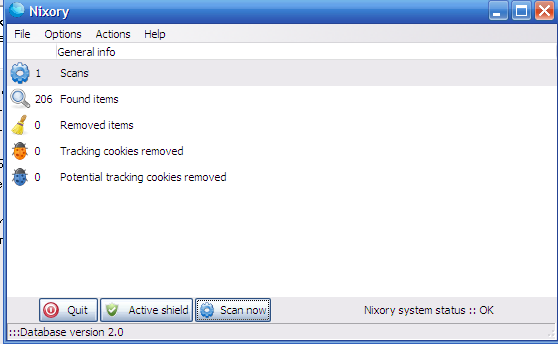
I hope it will get a sharp development and soon, when some friend asks me to fix his stupid non free-Windows PC, I would not have to use a trial version of Malware Bytes but directly use only Nixory
Anyways after using Nixory, MalwareBytes and Avira and thoroughfully scanned the system in Safe Mode and found and deleted some 15 Spyware / Viruses and tampered a bit with the Wireless Driver settings all the notebook devices started working fine again.
The wireless had also one really odd problem on this Packard Bell - Hera GL, even though the notebook wireless antenna was capable of detecting all the wireless networks it couldn't properly connect to any of it but failed to get proper IP addresses.
Partially the unable to grab an IP via wireless router dhcp server got fixed by using the Wireless restart Button (located on the Notebook corpus).
However even after cleaning up the Virus and Spyware the Wireless Networks connectivity problems on this Packard Bell continued, until I changed also few settings in the Control Panel I never thought Viruses / Spyware infected can have some bad impact on Wireless Card and CD drive make them unsusable though they showed like working correctly in Windows Control Panel -> System ??
In the meantime I reinstalled the Wireless Driver for the notebook, the Wireless card on the notebook was showing up itself under the name of Ralink 802.11n Wireless Lan Card in Windows Device Manager
After re-installing the wireless driver I had to also change few settings for the Wireless Network Connection using the menus Properties -> Configure -> Extended; therein everywhere for each Value I make it be Enable and for Power Saving Mode , I've choose the Value option of CAM
After a system reboot, everything started working finally fine. One last thing to add is that before I fixed the Ralink wireless to work under Windows, I tried to use a Bootable Linux LiveCD but even there the wireless was failing to connect to the wireless networks (maybe this shit wireless device has some issues with its Linux drivers).
Mon Dec 12 14:37:31 EET 2011
How to Prevent Server inaccessibility by using a secondary SSH Server access port
One of the Debian servers's
SSH daemon suddenly become inaccessible today. While trying
to ssh I experienced the following error:
Interestingly only the SSH server and sometimes the mail server was failing to respond and therefore any mean to access the server was lost. Anyways some of the services on the server for example Nginx continued working just fine.
Some time ago while still working for design.bg - web development company, I've experienced some similar errors with SSH servers, so I already had a clue, on a way to work around the issue and to secure myself against the situation to loose access to remote server because the secure shell daemon has broken up.
My work around is actually very simple, I run a secondary sshd (different sshd instance) listening on a different port number.
To do so I invoke the sshd daemon on port 2207 like so:
Besides that to ensure my sshd -p 2207 will be running on next boot I add:
to /etc/rc.local (before the script end line exit 0 ). I do set the sshd -p 2207 to run via /etc/rc.local on purpose instead of directly adding a Port 2207 line in /etc/ssh/sshd_config. The reason, why I'm not using /etc/ssh/sshd_config is that I'm not sure if using the sshd config to set a secondary port does run the port under a different sshd parent. If using the config doesn't run the separate ssh port under a different server parent this will mean that once the main parent hangs, the secondary port will become inaccessible as well.
$ ssh root@my-server.net -v
OpenSSH_5.8p1 Debian-2, OpenSSL 0.9.8o 01 Jun 2010
debug1: Reading configuration data /etc/ssh/ssh_config
debug1: Applying options for *
debug1: Connecting to mx.soccerfame.com [83.170.104.169] port
22.
debug1: Connection established.
debug1: identity file /home/hipo/.ssh/id_rsa type -1
debug1: identity file /home/hipo/.ssh/id_rsa-cert type -1
debug1: identity file /home/hipo/.ssh/id_dsa type -1
debug1: identity file /home/hipo/.ssh/id_dsa-cert type -1
...
Connection closed by remote host
Interestingly only the SSH server and sometimes the mail server was failing to respond and therefore any mean to access the server was lost. Anyways some of the services on the server for example Nginx continued working just fine.
Some time ago while still working for design.bg - web development company, I've experienced some similar errors with SSH servers, so I already had a clue, on a way to work around the issue and to secure myself against the situation to loose access to remote server because the secure shell daemon has broken up.
My work around is actually very simple, I run a secondary sshd (different sshd instance) listening on a different port number.
To do so I invoke the sshd daemon on port 2207 like so:
debian:~# /usr/sbin/sshd -p 2207
debian:~#
Besides that to ensure my sshd -p 2207 will be running on next boot I add:
/usr/sbin/sshd -p 2207
to /etc/rc.local (before the script end line exit 0 ). I do set the sshd -p 2207 to run via /etc/rc.local on purpose instead of directly adding a Port 2207 line in /etc/ssh/sshd_config. The reason, why I'm not using /etc/ssh/sshd_config is that I'm not sure if using the sshd config to set a secondary port does run the port under a different sshd parent. If using the config doesn't run the separate ssh port under a different server parent this will mean that once the main parent hangs, the secondary port will become inaccessible as well.
Mon Dec 12 13:13:03 EET 2011
Midnight in Paris (2011) -A tiny movie review

Yesteday with Baky (my dear Orthodox Coptic Christian friend) and Kliment (a good friend from the old rock'n'roll years), we went to the Dobrich Cinema (sadly just one cinema for the city is available). The cinema in Dobrich is called Cinema Club Icarus (Ikar). For all foreigners who wants to enjoy some movie, the Dobrich Cinema does offer a plenty of English speaking movies (with Bulgarian subtitles).
Pitily the Dobrich Cinema website http://www.kinoikar.com/bg/info/2 is not existing in English, though anyone wanting to check the current projected movies in the cinema can use the movie trailers and the movie pictures to get the necessery info.
Anyways I haven't been to a cinema for some almost two months, so going for a movie was really relaxing enjoyable experience. Besides that, we were lucky to see a movie which fitted quite well to my movie genre preferences -
Midnight in Paris . Midnight in Paris is a Romantic
Comedy for intellectuals and people who have a glipmse on art.
Its a Bohemian movie so to say and I believe it wouldn't
hold a big interest for the avarage man who doesn't keep interest
in Arts, History or Philosophy.
The movie plot revives around a young engaged American couple who
went to Paris for a business trip, just to find out there whole
life is gonna be changed by this.
The main actor Gil a just grown man is writting a Novel
book, trying to make a shift of his profession from being a movie
directory to a novel publicist. Gil (Owen Wilson) is an odd
Bohemian kind of man, who quickly fells in love with Paris rich
culture architecture and old fame.
Next to that Gil is a dreamer who (just like me dreams about the
old glorious times), when people were more respectable better moral
and more idealistic than in the current age. After one night of
heavy wine drinking, Gil's fiancee wents for some dancing and
leaves him on his own. Gil makes a round in Paris and losts himself
and decides to stay for a while in front of sold old Roman Catholic
Cathedral, a mysterious very old car crosses by the street and
suddenly some "party" gang asks Gil to join. He has no idea where
he is going and suddeny finds himself in the epoch of the world
famous 1920 of great book publicists like the
Fidgeralds family.
Night by night Gil is being transferred to a different epoch
back in time to meet a world famous artists and authors, people
like Ernest Hemingway, Picaso, Salvador Dali etc. etc. ;)
The movie shows many personages of odd world famous people
with some of their strangeties known by the current age. It appears
all of them are dreaming for all and the same thing, to live in a
earlier age to live in the Golden Age of Arts and Poetry
;)
The movie is real fun in Gil's personage I've seen a lot of "me",
also I've seen a lot of me in many of the other famous people as of
course presented in the movie. I hardly recommend this movie to
anyone who wants to take a break, have a good mindful laugh
time.
Here is Midnight in Paris movie trailer as well to get an
idea what to expect:
Posted by hip0 |
Permanent link
How to disable IPv6 on GNU / Linux
I have few servers, which have
automatically enabled IPv6 protocols (IPv6 gets automatically
enabled on Debian), as well as on most latest Linux distribituions
nowdays.
Disabling IPv6 network protocol on Linux if not used has 2 reasons:
1. Security (It's well known security practice to disable anything not used on a server)
Besides that IPv6 has been known for few criticil security vulnerabilities, which has historically affected the Linux kernel.
2. Performance (Sometimes disabling IPv6 could have positive impact on IPv4 especially on heavy traffic network servers).
I've red people claiming disabling IPv6 improves the DNS performance, however since this is not rumors and did not check it personally I cannot positively confirm this.
Disabling IPv6 on all GNU / Linuces can be achieved by changing the kernel sysctl settings net.ipv6.conf.all.disable_ipv6 by default net.ipv6.conf.all.disable_ipv6 equals 1 which means IPv6 is enabled, hence to disable IPv6 I issued:
To set it permanently on system boot I put the setting also in /etc/sysctl.conf :
This is method should be working if not on all on most of the Linux kernels version 2.6.x in that number it works 100% on recent versions of Fedora, CentOS, Debian and Ubuntu
Disabling IPv6 network protocol on Linux if not used has 2 reasons:
1. Security (It's well known security practice to disable anything not used on a server)
Besides that IPv6 has been known for few criticil security vulnerabilities, which has historically affected the Linux kernel.
2. Performance (Sometimes disabling IPv6 could have positive impact on IPv4 especially on heavy traffic network servers).
I've red people claiming disabling IPv6 improves the DNS performance, however since this is not rumors and did not check it personally I cannot positively confirm this.
Disabling IPv6 on all GNU / Linuces can be achieved by changing the kernel sysctl settings net.ipv6.conf.all.disable_ipv6 by default net.ipv6.conf.all.disable_ipv6 equals 1 which means IPv6 is enabled, hence to disable IPv6 I issued:
server:~# sysctl
net.ipv6.conf.all.disable_ipv6=0
To set it permanently on system boot I put the setting also in /etc/sysctl.conf :
server:~# echo 'net.ipv6.conf.all.disable = 1 >>
/etc/sysctl.conf
This is method should be working if not on all on most of the Linux kernels version 2.6.x in that number it works 100% on recent versions of Fedora, CentOS, Debian and Ubuntu
Fri Dec 9 17:11:53 EET 2011
How to solve "IPv6 addrconf: prefix with wrong length 48"
While reading some log files on one
of the co-located servers at UK2.net , I've noticed
dmesg log was filling in with tons of junk messages
like:
After checking the message to make sure it would not suddeny lead to server hang ups I figured out the message is not dangerous but just an annoying warning that some other (routing) host on the same network as mine is advertising something using IPv6, that doesn't fit with my IPv6 server config.
Actually the server doesn't use the IPv6 configuration at all, and the assigned configuration is just some kind of auto set IPv6 IP address.
The server, where this message appeared is powered by 64 bit Debian GNU / Linux Squeeze
To resolve the annoying message, two of the kernel sysctl settings needs to be modified with cmds:
Furthermore to prevent the IPv6 addrconf: prefix with wrong length 48 to re-appear after future server reboots / boots the two sysctl values of course needs to be included in /etc/sysctl.conf e.g.:
My server has 2 etherhet interfaces, eth0 and eth1 that's the reason I had to set up autoconf kernel the two vars net.ipv6.conf.eth0.autoconf and net.ipv6.conf.eth1.autoconf , for more interfaces more kernel vars (eth2, eth3) etc. needs to be set to "0"
I've seen posts online of people complaining about a similar errors to IPv6 addrconf: prefix with wrong length 48, like:
The solution to this messages is also done by setting the above described sysctl kernel vars. Setting the vars will suppress the messages which by the way with time could take up A LOT of disk space and fills /var/log/dmesg with this useless message, hence applying the "fix" is a must ;)
Another thing, I've noticed while I was researching about the error and the respective fix is that people on other deb based distributions like Ubuntu as well as on Fedora GNU / Linux had also experienced the issue.
[4288245.609762] IPv6 addrconf: prefix with wrong length
48
[4288445.984153] IPv6 addrconf: prefix with wrong length 48
[4288646.296110] IPv6 addrconf: prefix with wrong length 48
[4288846.609119] IPv6 addrconf: prefix with wrong length 48
[4289046.922604] IPv6 addrconf: prefix with wrong length 48
[4289247.267273] IPv6 addrconf: prefix with wrong length 48
[4289447.545800] IPv6 addrconf: prefix with wrong length 48
[4289647.857789] IPv6 addrconf: prefix with wrong length 48
[4289848.169308] IPv6 addrconf: prefix with wrong length 48
[4290048.595104] IPv6 addrconf: prefix with wrong length 48
[4290248.808497] IPv6 addrconf: prefix with wrong length 48
[4290449.103503] IPv6 addrconf: prefix with wrong length 48
[4290649.418747] IPv6 addrconf: prefix with wrong length 48
[4290849.742731] IPv6 addrconf: prefix with wrong length
48
After checking the message to make sure it would not suddeny lead to server hang ups I figured out the message is not dangerous but just an annoying warning that some other (routing) host on the same network as mine is advertising something using IPv6, that doesn't fit with my IPv6 server config.
Actually the server doesn't use the IPv6 configuration at all, and the assigned configuration is just some kind of auto set IPv6 IP address.
The server, where this message appeared is powered by 64 bit Debian GNU / Linux Squeeze
To resolve the annoying message, two of the kernel sysctl settings needs to be modified with cmds:
debian:~# sysctl net.ipv6.conf.all.accept_ra=0
debian:~# sysctl net.ipv6.conf.all.autoconf=0
debian:~# sysctl net.ipv6.conf.lo.autoconf=0
debian:~# sysctl net.ipv6.conf.eth0.autoconf=0
debian:~# sysctl net.ipv6.conf.eth1.autoconf=0
Furthermore to prevent the IPv6 addrconf: prefix with wrong length 48 to re-appear after future server reboots / boots the two sysctl values of course needs to be included in /etc/sysctl.conf e.g.:
debian:~# echo 'net.ipv6.conf.all.accept_ra = 0' >>
/etc/sysctl.conf
debian:~# echo 'net.ipv6.conf.all.autoconf = 0' >>
/etc/sysctl.conf
echo 'net.ipv6.conf.lo.autoconf = 0' >>
/etc/sysctl.conf
echo 'net.ipv6.conf.eth0.autoconf = 0' >>
/etc/sysctl.conf
echo 'net.ipv6.conf.eth1.autoconf = 0' >>
/etc/sysctl.conf
My server has 2 etherhet interfaces, eth0 and eth1 that's the reason I had to set up autoconf kernel the two vars net.ipv6.conf.eth0.autoconf and net.ipv6.conf.eth1.autoconf , for more interfaces more kernel vars (eth2, eth3) etc. needs to be set to "0"
I've seen posts online of people complaining about a similar errors to IPv6 addrconf: prefix with wrong length 48, like:
IPv6 addrconf: prefix with wrong length 96
IPv6 addrconf: prefix with wrong length
128
The solution to this messages is also done by setting the above described sysctl kernel vars. Setting the vars will suppress the messages which by the way with time could take up A LOT of disk space and fills /var/log/dmesg with this useless message, hence applying the "fix" is a must ;)
Another thing, I've noticed while I was researching about the error and the respective fix is that people on other deb based distributions like Ubuntu as well as on Fedora GNU / Linux had also experienced the issue.
Thu Dec 8 16:53:02 EET 2011
How to check /dev/ partition disk labeling in Debian GNU / Linux
The usual way that one is supposed to
check a certain partition let's say /dev/sda1 disk UUID
(Universal Unique Identifier) label is through a command:
For reason however Debian does not include vol_id command. To check the UUID assigned disk labels on Debian one should use another command called blkid (part of util-linux deb package).
blkid will list all block device attributes so it doesn't specifically, passing any partition as argument.
Here is an example output of blkid :
vol_id /dev/sda1
For reason however Debian does not include vol_id command. To check the UUID assigned disk labels on Debian one should use another command called blkid (part of util-linux deb package).
blkid will list all block device attributes so it doesn't specifically, passing any partition as argument.
Here is an example output of blkid :
server:/root# blkid
/dev/sda1: UUID="cdb1836e-b7a2-4cc7-b666-8d2aa31b2da4"
SEC_TYPE="ext2" TYPE="ext3"
/dev/sda5: UUID="c67d6d43-a48f-43ff-9d65-7c707a57dfe6"
TYPE="swap"
/dev/sdb1: UUID="e324ec28-cf04-4e2e-8953-b6a8e6482425"
TYPE="ext2"
/dev/sdb5: UUID="1DWe0F-Of9d-Sl1J-8pXW-PLpy-Wf9s-SsyZfQ"
TYPE="LVM2_member"
/dev/mapper/computer-root:
UUID="fbdfc19e-6ec8-4000-af8a-cde62926e395" TYPE="ext3"
/dev/mapper/computer-swap_1:
UUID="e69100ab-9ef4-45df-a6aa-886a981e5f26" TYPE="swap"
/dev/mapper/computer-home:
UUID="2fe446da-242d-4cca-8b2c-d23c76fa27ec"
TYPE="ext3"
Thu Dec 8 15:44:42 EET 2011
How to convert html pages to text in console / terminal on GNU / Linux and FreeBSD

I'm realizing the more I'm converting to a fully functional GUI user, the less I'm doing coding or any interesting stuff...
I remembered of the old glorious times, when I was full time console user and got a memory on a nifty trick I was so used to back in the day.
Back then I was quite often writing shell scripts which were fetching (html) webpages and converting the html content into a plain TEXT (TXT) files
In order to fetch a page back in the days I used lynx - (a very simple UNIX text browser, which by the way lacks support for any CSS or Javascipt) in combination with html2text - (an advanced HTML-to-text converter).
Let's say I wanted to fetch a my personal home page http://pc-freak.net/, I did that via the command:
$ lynx -source http://pc-freak.net/ | html2text >
pcfreak_page.txt
The content from pc-freak.net got spit by lynx as an html source and passed html2pdf wchich saves it in plain text file pcfreak_page.txt
The bit more advanced elinks - (lynx-like alternative character mode WWW browser) provides better support for HTML and even some CSS and Javascript so to properly save the content of many pages in plain html file its better to use it instead of lynx, the way to produce .txt using elinks files is identical, e.g.:
$ elinks -source http://pc-freak.net/blog/ | html2text
> pcfreak_blog_page.txt
By the way back in the days I was used more to links , than the superior elinks , nowdays I have both of the text browsers installed and testing to fetch an html like in the upper example and pipe to html2text produced garbaged output.
Here is the time to tell its not even necessery to have a text browser installed in order to fetch a webpage and convert it to a plain text TXT!. wget file downloading tools supports source dump as well, for all those who did not (yet) tried it and want to test it:
$ wget -qO- http://pc-freak.net | html2text
Anyways of course, some pages convertion of text inside HTML tags
would not properly get saved with neither lynx or
elinks cause some texts might be embedded in some
elinks or lynx unsupported CSS or JavaScript. In
those cases the GUI browser is useful. You can use any browser like
Firefox, Epiphany or Opera 's File -> Save As (Text
Files) embedded functionality, below is a screenshot showing an
html page which I'm about to save as a plain Text File in
Mozilla Firefox: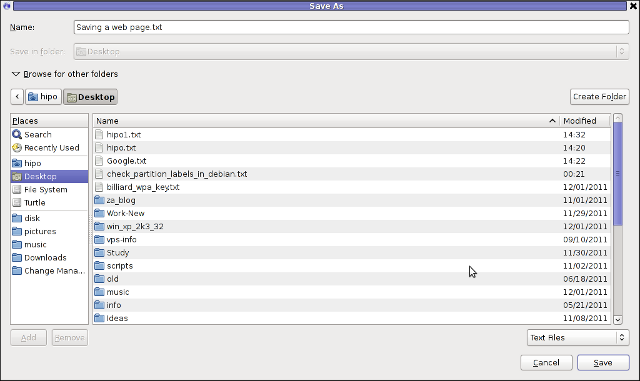
Besides being handy in conjunction with text browsers, html2text is also handy for converting .html pages already existing on the computer's hard drive to a plain (.TXT) text format.
One might wonder, why would ever one would like to do that?? Well I personally prefer reading plain text documents instead of htmls ;)
Converting an html files already existing on hard drive with html2text is done with cmd:
$ html2text index.html >index.txt
To convert a whole directory full of .html (documentation) or whatever files to plain text .TXT , cd the directory with HTMLs and issue the one liner bash loop command:
$ cd html/
html$ for i in $(echo *.html); do html2text $i > $(echo $i | sed
-e 's#.html#.txt#g'); done
Now lay off your back and enjoy reading the dox like in the good old hacker days when .TXT files were fashionable ;)
Thu Dec 8 11:05:01 EET 2011
How to list enabled VirtualHosts in Apache on GNU / Linux and FreeBSD
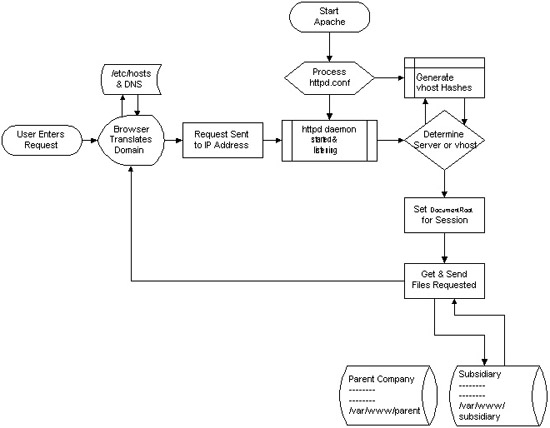
I decided to start this post with this picture I found on onlamp.com article called "Simplify Your Life with Apache VirtualHosts .I put it here because I thing it illustrates quite well Apache's webserver internal processes. The picture gives also a good clue when Virtual Hosts gets loaded, anways I'll go back to the main topic of this article, hoping the above picture gives some more insight on how Apache works.;
Here is how to list all the enabled virtualhosts in Apache on Debian GNU / Linux serving pages:
server:~# /usr/sbin/ apache2ctl -S
VirtualHost configuration:
wildcard NameVirtualHosts and _default_ servers:
*:* is a NameVirtualHost
default server exampleserver1.com
(/etc/apache2/sites-enabled/000-default:2)
port * namevhost exampleserver2.com
(/etc/apache2/sites-enabled/000-default
port * namevhost exampleserver3.com
(/etc/apache2/sites-enabled/exampleserver3.com:1)
port * namevhost exampleserver4.com
(/etc/apache2/sites-enabled/exampleserver4.com:1)
...
Syntax OK
The line *:* is a NameVirtualHost, means the Apache VirtualHosts module will be able to use Virtualhosts listening on any IP address (configured on the host), on any port configured for the respective Virtualhost to listen on.
The next output line:
port * namevhost exampleserver2.com
(/etc/apache2/sites-enabled/000-default
Shows requests
to the domain on any port will be accepted (port *) by the
webserver as well as indicates the <VirtualHost> in the file
/etc/apache2/sites-enabled/000-default:2 is defined on line
2 (e.g. :2).To see the same all enabled VirtualHosts on FreeBSD the command to be issued is:
freebsd# pcfreak# /usr/local/sbin/httpd -S VirtualHost
configuration:
wildcard NameVirtualHosts and _default_ servers:
*:80 is a NameVirtualHost
default server pc-freak.net
(/usr/local/etc/apache2/httpd.conf:1218)
port 80 namevhost pc-freak.net
(/usr/local/etc/apache2/httpd.conf:1218)
port 80 namevhost pcfreak.afraid.org
(/usr/local/etc/apache2/httpd.conf:1353)
...
Syntax OK
On Fedora and the other Redhat Linux distributions, the apache2ctl -S should be displaying the enabled Virtualhosts.
One might wonder, what might be the reason for someone to want to check the VirtualHosts which are loaded by the Apache server, since this could be also checked if one reviews Apache / Apache2's config file. Well the main advantage is that checking directly into the file might sometimes take more time, especially if the file contains thousands of similar named virtual host domains. Another time using the -S option is better would be if some enabled VirtualHost in a config file seems to not be accessible. Checking directly if Apache has properly loaded the VirtualHost directives ensures, there is no problem with loading the VirtualHost. Another scenario is if there are multiple Apache config files / installs located on the system and you're unsure which one to check for the exact list of Virtual domains loaded.
Wed Dec 7 16:16:22 EET 2011
How to convert SVG to PNG graphic formats (using GUI and console) on GNU / Linux and FreeBSD
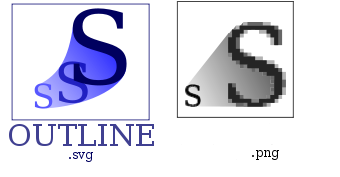
I've playing trying to learn InkScape - The Open Source vector graphic editor .By so far I'm quite impressed on how easy this program is learned and how easy graphical manipulation with this nifty program can be done.
The default format in which InkScape saves its files is SVG (Scalable Vectors Graphics). For all those unfamiliar with SVG - SVG is an open (free format) format developed in 1999 which insetad of containing binary data like PNG or JPEG does contain plain XML content. SVG being consisted of plain XML has multiple advantageous, the most important one makes it easy for text and visual data to be displayed among different program svg readers in absolutely identical way. Besides that the format if read with plain text editor like vim or emacs can be altered directly via the source.
Being multi system interoperable makes SVG as a great format for text and visual data storage in HTML5, actually SVG is already a part of the HTML5 html coding standard. And most probably its adoption rate will raise up drastically as soon as HTML5 starts substitute HTML4 and lower web standards.
Anyways I'm slipping away from the aim of this post so I'll stop blabbering on how great SVG is and let people check it out for themselves (if not already).
Going back to the aim of my article to show How to convert SVG to PNG graphical extension on GNU / Linux and FreeBSD
After producing a bunch of files with InkScape I realized the default format in which Inkscape stores its files is SVG , this was okay with me but since I wanted to have my experimental produced content in PNG I needed a way to convert SVG to
My first logical guess was that The Gimp will be able to handle the situation and after opening my SVG file with GIMP and used the gimp File -> Save As option and give the SVGfile an extension of PNG , Gimp succesfully converted the file to PNG.
However I wanted to dig further and check out what is the standard accepted way to convert SVG files using a plain command. This will possibly be handy to me if I had to do something online (let's say a website) which will accept SVG and will require the SVG files to be converted and also stored in PNG or other Graphic file formats.
After checking online, I've found a post which pointed me to librsvg2 which contains RSVG - (Turn SVG files into raster images.)
librsvg is available as a package in most mainstream Linux distributions nowdays, Fedora, Debian etc., as well as contains a port inside the FreeBSD ports system. Since I'm using Debian on my notebook where I installed and tested the command line SVG to PNG convertion the way I did it is:
noah:/home/hipo/Desktop# apt-get --yes install
librsvg2-bin
Reading package lists... Done
Building dependency tree
Reading state information... Done
The following NEW packages will be installed:
librsvg2-bin
0 upgraded, 1 newly installed, 0 to remove and 16 not
upgraded.
Need to get 72.5 kB of archives.
After this operation, 180 kB of additional disk space will be
used.
Get:1 http://ftp.nl.debian.org/debian/ squeeze/main librsvg2-bin
amd64 2.26.3-1 [72.5 kB]
Fetched 72.5 kB in 0s (184 kB/s)
Selecting previously deselected package librsvg2-bin.
(Reading database ... 376046 files and directories currently
installed.)
Unpacking librsvg2-bin (from .../librsvg2-bin_2.26.3-1_amd64.deb)
...
Processing triggers for man-db ...
Setting up librsvg2-bin (2.26.3-1) ...
Afterwards the exact convertion of my Inscape SVG file drawing.svg to drawing.png using rsvg I've done like so:
hipo@noah:~/Desktop$ rsvg drawing.svg
drawing.png
The convertion results for me was 100% uniqueness between the file converted and the output PNG. Some people might wonder why I didn't used Inkscape's Export to Bitmap function and then use convert command part of ImageMagick in order to convert the produced Inkscape bitmap to PNG.
On Debian, librsvg2-bin contains 2 more executable besides rsvg which are a handy tools, one is the rsvg-view command which allows one to view SVG files using command line or Graphic enviroment , the other one is rsvg-convert which supports again SVG convert to PDF and to PNG .
Before proceeding with the other described ways to convert SVG to PNG earlier in this article, I give a try to Inkscape's Export to Bitmap embedded function but the produced bitmap did not resembled the original SVG file so I decided to completely abandon this method.
Maybe there is some particular reason for the failure of Inkscape to produce a good BMP file, like for example the chaotic way I've tested Inkscape to place random images sometimes going out of the field of a paper borders etc.
This should have influenced the improper generation of Bitmap using Inkscape, anyhow it seems InkScape needs some more development until the bugs in Bitmap creation get fixed.
By the way if you're wondering how to convert PNG to bitmap BMP after, once having converted SVG to PNG this is easily doable with convert command, like so:
hipo@noah:~/Desktop$ convert drawing.png
drawing.bmp
Maybe in future releases of Inkscape , it will be a good idea if InkScape developers integrate a convertion to other formats this will make it handy and make surely these nice program more popular among users. Hope this is helpful. Cheers and Happy Hacking ;)
Tue Dec 6 16:00:09 EET 2011
Poderosa a tabbed Terminal Emulator (PuTTY Windows Alternative)
Even though, I rarely use
Windows to connect to remote servers using SSH or
Telnet protocols in some cases I'm forced to do that (in
cases I'm away from my Linux notebook). I'm doing my best to keep
away from logging anywhere via SSH using Windows as when
using Windows you never know what kind of spyware, malware
or Viruses is already on the system, not to mention Microsoft are
sniffing a lot if not everything which is typed on the keyboard...
Anyways, usually I use Putty as a quick way to access a
remote SSH, however pitily PuTTY lacks an embedded
functionality for Tabs and each new connection to a server I had to
run a new instance of PuTTY. This is okay if you need to
access a single server but in some cases where access to multple
servers is necessery lacking the tab functionality and starting 10
times putty is really irritating and one forgets what kind of
connection is present on which PuTTY instance.
Earlier on, I've blogged about the existence of PuTTY Connection Manager PuTTY add-on program which is a PuTTY wrapper which enables PuTTY to be used with Connection Tabs feature, however installing two programs is quite inconvenient, especially if you have to do this every few days (in case if travelling a lot).
Luckily there is another terminal emulator free program for Windows called PodeRoSA which natively supports a tabbed Secure Shell connections.
If you want to get some experience with it check out Poderosa's website , here is also a screenshot of the program running few ssh encrypted connections in tabs on a Windows host.
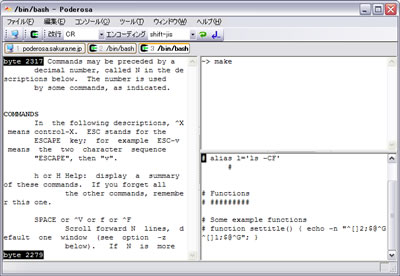
Another good reason that one might consider using Poderosa instead of PuTTY is the Apache License under which Poderosa is developed. Currently the Apache License is compatible with GPL free software license which makes the program fully free software. The PuTTY license is under BSD and MIT and some other weird custom license not 100% compatible with GPL and hence PuTTY can be considered less free software in terms of freedom.
Earlier on, I've blogged about the existence of PuTTY Connection Manager PuTTY add-on program which is a PuTTY wrapper which enables PuTTY to be used with Connection Tabs feature, however installing two programs is quite inconvenient, especially if you have to do this every few days (in case if travelling a lot).
Luckily there is another terminal emulator free program for Windows called PodeRoSA which natively supports a tabbed Secure Shell connections.
If you want to get some experience with it check out Poderosa's website , here is also a screenshot of the program running few ssh encrypted connections in tabs on a Windows host.

Another good reason that one might consider using Poderosa instead of PuTTY is the Apache License under which Poderosa is developed. Currently the Apache License is compatible with GPL free software license which makes the program fully free software. The PuTTY license is under BSD and MIT and some other weird custom license not 100% compatible with GPL and hence PuTTY can be considered less free software in terms of freedom.
Sat Dec 3 11:28:42 EET 2011
How to convert Postscript files to PDF on Debian GNU / Linux with ps2pdf
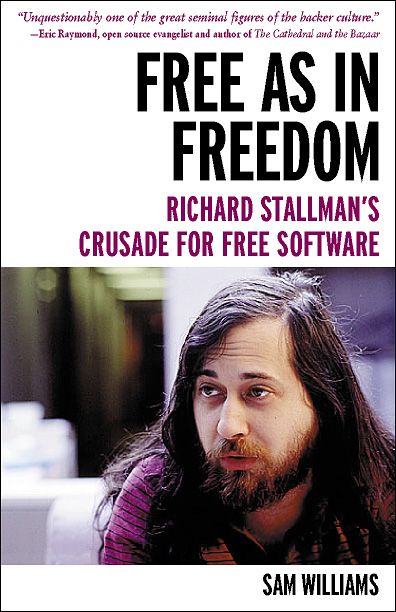
I'm currently reading Free as in Freedom (2.0) R. Stallman and the Free Software Revolution
The book includes a reference to Eric S. Raymond 's famous The Cathedral and the Bazaar which does makes a point about the important of Open Source . I've read the The Cathedral and the Bazaar paper some very long time ago (in my young days so to say) and hence I couldn't resemble much of the document so I jumped in after the footnote in the FAIF book and decided to take a quick look on The Cathedral and the Bazaar once again to bring up some memories. I was stunned to find the paper is available in many formats but officially not included in PDF . Since i'm a GNU / Linux user I've never managed to get into the habit to read postscript documents which from modern day stand point are also already a bit of obsolete and therefore I found it as a wise idea to convert and mirror the POSTSCRIPT (PS) version of the document to PDF on pc-freak.net
Happily the ps2pdf command to convert the ps to pdf on my debian gnu / linux is really easy:
ps2pdf cathedral-and-the-bazaar-Eric_Raymond.ps
Cathedral-and-the-bazaar-Eric_Raymond.pdf
ps2pdf is part of the ghostscript deb package, so if you can't find the program you will need to have it installed with apt-get first.
By the way the Postscript file is easily readable using my default gnome PDF reader evince , but anyways I converted and mirrored the paper for all those windows users who might like to take a look at the document in PDF.
I've also made a mirror of the original Cathedral and the Bazaaar postscript document here , for all those who want to check out The PDF version of the Cathedral and the Bazaaar is for download here
Even though the "open source" movement is an interesting idea and it had some major impact on the development of some free software the idiology of open source which was very much influenced by this document is very weak compared to the philosophy Richard Stallman indcuded as of the great need of the software to be free.
To be honest looking back in time for a long time being a Linux user I did not make any distinguishment between "Free Software" concept and "Open Source", even worser I considered to evangelize on Open Source not realizing that initially what attracted me to free software was the idiology of open source and not the real values on which ground free software is built.
This kind of miss understanding between perception of "open source" and "free software" I got and spread for years now I fully realize and I seem like when I red back then The Cathedral and the Bazaar document I didn't looked any critical at the document but it had a major, I would say "bad" impact on my idiology on software for a long time. So for all those who had not checked it it's worthy checking but only in case if one fully understands Richard Stallman's concept of Free Software, without this understanding one can easily slip into the wrong believe (just like me back in thme) that open source is the same as free software. Even though open source can be free software it is not presumably that an open source is free software and that it guarantees that the published source will be free. But I'll stop now as I slept away from my goal of the article to just log here how a convertion of postscript to pdf on gnu / linux is done.
Just to close up this article I warmly recommend on all people interested into hacking and the history of Free operating systems and Free software as FreeBSD and GNU / Linux the Free as in Freedom (2.0) book ! Its truly a remarkable and great inspirational reading for all people like me involved into free software realm of ICT.
Thu Dec 1 15:24:16 EET 2011
How to install Microsoft Windows XP SP3 on Debian GNU / Linux Squeeze
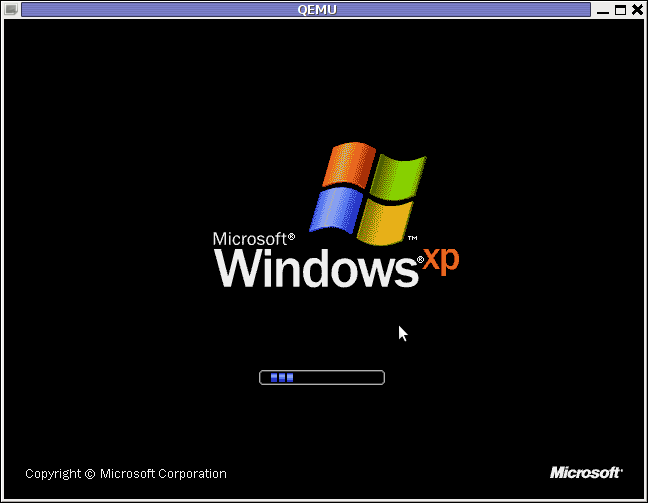 I have never
did a proper install of Windows XP on Debian before hand.
Even though I experimented once long time ago. I had zero success
with installing Windows XP Service Pack 2 . The only
Windows I can make correctly working before hand on these early
days on my Debian powered notebook with qemu virtual machine
emulator was Windows 2000 .
I have never
did a proper install of Windows XP on Debian before hand.
Even though I experimented once long time ago. I had zero success
with installing Windows XP Service Pack 2 . The only
Windows I can make correctly working before hand on these early
days on my Debian powered notebook with qemu virtual machine
emulator was Windows 2000 .I decided to give it another go today as I hoped the qemu has advanced and I've seen many reports online of people who were able to correctly make Windows XP SP2 work out.
As I've seen many blog posts online of people who succesfully run with qemu Windows XP SP2, in order to escape from repeating the other guys experience and conduct a fresh experiment, I decided to give qemu a try with Microsoft.Windows.XP.Professional.SP3.Integrated.June.2011.Corporate
Before I proceed with using latest qemu I,
1. Installed qemu using the usual:
debian:~# apt-get install --yes qemu qemu-keymaps qemu-system
qemu-user qemu-utils uml-utilities
...
Afterwards,
2. Created a new directory where the qemu Windows image will be stored:
debian:~# su hipo
hipo@noah:~$ mkdir windows
hipo@noah:~$ cd windows
hipo@noah:/home/hipo/windows$
As a following step I loaded the tun kernel module which is necessery for Qemu to properly handle the Windows LAN networking.
3. Load and set proper permissions for tun kernel module
In case if /dev/net is not existing first step is to create the proper device, however in most cases /dev/net should be there:
debian:~# mkdir -p /dev/net
debian:~# mknod /dev/net/tun c 10 200
As a next step its necessery to load tun kernel module and set the proper permissions:
debian:~# modprobe tun
debian:~# echo 'tun' >> /etc/modules
debian:~# chgrp users /dev/net/tun
debian:~# chmod g+w /dev/net/tun
Next step is to create an image file with dd or with qemu-img which will be holding the Virtual Machine Windows installation.
4. Create image file for Windows using dd
I decided to create a the image file to be with a size of 5 Gigabytes, this is of course custom so other people might prefer having it less or more the absolute minimum for a proper Windows XP SP3 install is 2000 Megabytes.
debian:~# su hipo -; cd windows;
debian:/home/hipo/windows$ dd of=hd.img bs=1024 seek=5000000
count=0
0+0 records in
0+0 records out
0 bytes (0 B) copied, 1.5505e-05 s, 0.0 kB/s
Notice here that the file dd will create will appear like 0 kb file until the Windows install from a BootCD is run with qemu.
5. Download an image of Microsoft.Windows.XP.Professional.SP3.Integrated.June.2011.Corporate from thepiratebay.org
Microsoft.Windows.XP.Professional.SP3.Integrated.June.2011.Corporate is currently available for download from the thepiratebay.org if in the times to come it is not available it will most likely be available from torrentz.net, isohunt.com etc. so I'll skip more explanations with this step and let you use your favourite torrent program of choice to download the MS Windows iso. Just to make a note here I used transmission as this is my favourite torrent client. After downloading the iso I used K3B to burn the Image file as Bootable ISO. I'm naturally a GNOME user so to burn it as Image I just open it with K3B by using the GNOME menu and selecting Open with K3B
Next I instructed qemu to boot from the just burnt CD.
6. Boot windows Installation with Qemu from the Boot CD
debian:/home/hipo/windows$ qemu -boot d -cdrom /dev/cdrom
-hda hd.img
Notice here that I'm running the qemu virtual machine emulator with a non-privileged reasons. This is important as qemu might have holes in the emulation of Windows Networking stack which if executed as root superuser. Can allow some malicious attacker to remotely compromise your GNU / Linux PC ...
Qemu window will pop-up where one installs the Windows as it will install it using an ordinary PC. To switch qemu to fullscreen mode to have the complete feeling like installing Windows on an non-emulated PC ctrl + alt + f can be pressed.
The Windows installation took like 1 hour 20 minutes on my dual core 1.8 Ghz notebook with 2 GB of RAM. But I should say while installing I had multiple applications running; xmms, transmission, epiphany, icedove, evince etc. probably if I just run the Virtual Machine with no other applications to extra load my PC, probably the Windows install would have been done in max 50 minutes time.
After the installation is complete. To
7. Further run the installed Windows
debian:/home/hipo/windows$ qemu -hda hd.img -boot c
...
As a next step its necessery to;
8. Bring up the tap0 interface and configure it for the user
I'm running my qemu emulator with my user hipo , so I run cmds:
debian:/home/hipo/windows$ su - root
debian:~# tunctl -u hipo
Set 'tap0' persistent and owned by uid 1000
9. Enable ip_forwarding and arp proxy and for wlan0 and tap0
debian:~# echo 1 >
/proc/sys/net/ipv4/conf/wlan0/proxy_arp
debian:~# echo 1 > /proc/sys/net/ipv4/conf/tap0/proxy_arp
debian:~# echo 1 >
/proc/sys/net/ipv4/conf/tap0/proxy_arp
10. Install the proper Network Drivers inside Windows
That's just in case, if they're not supported by the Windows default existing drivers.
To do so, I downloaded my LAN drivers from the Vendor and put it on USB and sticked the USB drive to my laptop. In order to make the Kingston USB drive I used to transfer my LAN and Video drivers. I had to restart qemu with the parameter -usb -usbdevice host:0951:1625 , where I used lsusb to check and get the correct USB ID 0951:1625, like shown in the command below:
debian:~# lsusb |grep -i kingston
Bus 001 Device 006: ID 0951:1625 Kingston Technology DataTraveler
101 II
After on I booted again the Windows XP with the following command line in order to make qemu detect the USB Drive:
debian:/home/hipo/windows# sudo qemu -boot c -hda hd.img -usb
-usbdevice host:0951:1625
One oddity here is that in order for qemu to detect the USB stick, I had to run it via sudo with super user privileges.Don't ask me why this is the only way it worked ...
Next on used the Windows device manager from Control Panel -> System -> Device Manager to point my undetected hardware to the correct Win drivers.
For the GUI preferring user qemu has a nice GNOME GUI interface called qemu-launcher, if you like to use qemu via it instead of scripting the qemu launcher commands, you can install and use via:
debian:~# apt-get install --yes qemu-launcher qemuctl
...
debian:/home/hipo/windows$ qemu-launcher
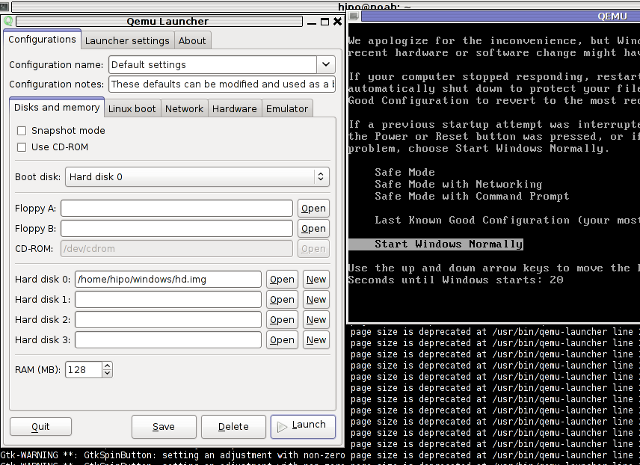
Another GUI alternative to qemu-launcher, which easifys the work with qemu is qemulator; here is a screenshot:
